Sokan ceremony พระราชพิธีโสกันต์ แห่งกรุงรัตนโกสินทร์ | Thailand 🇹🇭
โพสท์โดย©️ https://www.bangkokpost.com/print/428778/
While the royal topknot-cutting ceremony was discontinued in 1932, with the end of Siam's system of absolute monarchy, it is important to preserve knowledge about this dazzling ritual for cultural, historic and purely aesthetic reasons
Anyone who gets the chance to tour the ordination hall at Wat Ratchapradit Sathitmahasimaram Ratchaworawihan, the temple chosen by King Rama IV to officially represent his reign, will surely notice the many murals depicting royal ceremonies performed during the Rattanakosin period, the era that began with the accession of King Rama 1 to the throne in 1782.
There are 12 wall paintings in all, each assigned to a different month of the year, and the one for August depicts the elaborate rituals carried out when the topknot of a prince or princess was ceremoniously removed.
This important rite of passage to adolescence was held when a prince was aged somewhere between 11 and 13 and a princess was nine to 11 years of age. The last royal topknot-cutting ceremony was held for Princess Sudasiri Sobha, a daughter of Prince Chudadhuj Dharadilok (one of King Rama V's many sons), not long before the bloodless revolution of June 1932 which brought to an end many centuries of absolute monarchy.
The cultural significance of this long-defunct tradition, for which very elaborate and costly garments, jewellery and other apparel was specially created, was the subject of a recent seminar, hosted by the Queen Sirikit Museum of Textiles. The keynote speakers were Phra Maha Raja Guru Bidhi Sri Visudhigun, head Brahmin at the Royal Ceremonial Affairs Division, and Bulong Srikanok, a historian from the Fine Arts Department. The programme concluded with a demonstration, organised by Weeradhamma Tragoonngoenthai, founder of the Surin-based Chansoma Group, in which a boy was dressed in the clothes and other finery originally designed for a topknot-cutting ceremony.
Phra Maha Raja Guru Bidhi Sri Visudhigun (Chawin Rangsibrahmanakul) began by telling the seminar that there was a whole range of beliefs and traditions regarding Thai newborns and the ones which applied depending on the region in which as the child was born, local customs, his/her religion and social rank. In his Birth-Related Traditions, eminent Thai scholar Phraya Anuman Rajadhon noted that it was a long-standing tradition in Siam for young children of the monarch and high-ranking aristocrats to wear their hair in a topknot.
Phraya Anuman Rajadhon went on to suggest that topknot-cutting evolved from a tradition in which the head of a baby was ceremoniously shaven when the infant was one month old. Afterwards, the hair at the crown of the child's head was left uncut because that was considered the most delicate part of the skull and touching it as little as possible was believed to allow the bone there to develop properly. As the child got older, the hair in that area grew very long and would typically be coiled upon itself and worn as a bun.
According to the head Brahmin, the topknot tradition in Thai culture is possibly derived from the custom of depicting members of the Hindu pantheon of gods with their hair drawn back into a tight coil on the top of their heads. He suggested that it was possible that this hairstyle, also favoured by Hindu priests and other members of the Brahmin caste, was adopted for Thai children in the belief that doing so would protect these youngsters from harm. In the past, Thai children would keep their topknots until they turned 11 at which point it would be ritually shaved off (although the ceremony could be delayed until the child's 13th birthday). The ceremony served as a rite of passage, signifying that the person was no longer a little child, but was transitioning towards adulthood. Members of the royal family holding the rank of phra ong chao (child or grandchild of the union between a king and a commoner) upwards referred to this topknot-cutting ceremony as sokan; royals of lower rank (from Mom Chao downwards) used the word kesakan for the same ceremony.
When a child had reached the right age for this rite of passage, the royal court astrologers would be consulted and asked to set an auspicious date and time for the ceremony, during which both Buddhist and Brahmin rituals would be performed simultaneously. The venue was usually the Dusit Maha Prasat Throne Hall within the Grand Palace. In the early years of the Rattanakosin period, the sokan/kesakan usually coincided with Sampat Charachin, a New Year tradition observed in the fourth month of the lunar calendar. Later, topknot-cutting ceremonies were scheduled to coincide with Triyampawai, the Brahmin new year celebration which revolved around the Giant Swing (Sao Ching Cha) that now stands in front of Wat Suthat.
For her address to the seminar, historian Bulong Srikanok chose to cover the evolution of the royal topknot-cutting ceremony throughout history. No evidence of it has been found in records from the Sukhothai period, she said, and the very first mention of this ceremony in chronicles from the later Ayutthaya period dates from the reign of King Prasat Thong (1629-56). It took place at Ban Koh Len in 1632 and it was held for Prince Phra Ong In who later succeeded to the throne of Ayutthaya.
Another piece of historical evidence quoted by Bulong is a document whose title translates as "Testimony of the King [Uthumphon] from Wat Pradu Songtham". According to this text, the topknot-cutting ceremony (and the associated royal bathing ceremony), performed according to the Ayutthaya tradition, continued even after the fall of that kingdom to the Burmese in 1767. Princess Pinthawadee (a daughter of King Boromakot and Kromluang Pipitmontree) was a member of the Ayutthaya royal family who survived that upheaval and lived on into the Rattanakosin era. She was a sister of the last two kings of Ayutthaya (Uthumphon and Ekkathat) and it is presumed that, during the reconstruction that followed the Burmese invasion, King Taksin allowed her to stay in his palace in Thonburi (Wang Doem). The princess continued to give advice on royal traditions and protocol right up to King Taksin's death and the end of the Thonburi era.
King Rama I, later invited the princess to move across the river into his newly built Grand Palace and from that base she restored the royal topknot-cutting ceremony to its full glory, the first recipient of the revived full-scale ritual being Princess Kundhol Tippayawadee, a daughter of the founder of the new royal dynasty. This elaborate rite of passage for children of royal or noble birth was to be observed right up to the time of Thailand's last absolute monarch, Rama VII (reigned 1925-35).
Several history books go into great detail about the steps followed in the royal version of this ceremony. When the auspicious moment came, a court official would remove the little crown resting on the topknot of the prince (or princess), uncoil the hair and divide it into three separate locks using gold, silver and gold-bronze spoons. To each of the locks of hair, the courtier would attach nine gem-studded rings and nine bael leaves using gold, silver and gold-bronze threads, respectively. (Bael leaves — bai matoom in Thai — have long been used in auspicious ceremonies in Thailand because Brahmins consider the bael tree to be holy because of its links with the god Shiva.)
The reigning king would cut off the first lock of the child's hair, the most senior relative of the child would snip the second lock and the child's father would deal with the third. While this went on the onlookers would be entertained with music played on traditional instruments (gongs, shells, horns, xylophones and klong khaek drums). Afterwards, the child would be led to another area to have his/her head completely shaved and to change into a new set of clothes before re-emerging to present food, new saffron robes and other religious apparel to invited monks.
According to royal protocol handed down from the days of Ayutthaya, no less than four sets of garments would be changed into and out of by each prince/princess during the course of their big day. Separate attire was required for the following separate segments of the ceremony: while all present listened to a monk delivering an introductory sermon; for the actual topknot-cutting and subsequent ritual bathing; for the post-bathing offering of food to monks; and for a final wian thian (circumambulation holding a lit candle) ceremony.
The first set of clothes comprised a long-sleeved top, leggings, a jongkraben (traditional wraparound pantaloons), a diamond-studded belt, a choker studded with diamonds and other precious stones and a necklace. To distinguish between princes/princesses of phra ong chao rank (mother being a commoner) and chao fah rank (mother being a queen), the former would have rectangular flaps of ornate fabric suspended from the waist to hang over both hips, while the latter would also have a third flap hanging at the front to denote his/her higher status.) Each royal would also wear diamond-studded swan- or flower-motif pieces of jewellery over both shoulders and scores of gem-encrusted bracelets, armbands and anklets (all decorated with diamonds for chao fah princes/princesses), a pair of white socks and a pair of embroidered shoes. The topknot would be adorned with a small crown called either a phra kiao yod (for chao fah rank) or a kiao dok mai wai or kiao thongkham (for phra ong chao rank). The royal child would also wear a gem-studded crown made of sacred white threads of yarn called a mongkol yon.
The second set of apparel, donned for the topknot-cutting, was similar to the first set but with the addition of a white, ankle-length sarong and a gold-embroidered, white sabai (rectangular shawl worn over one shoulder). For the ritual bathing that followed this, the prince/princess would remove their mongkol yon, socks, shoes and some of their jewellery. A bael leaf would also be placed behind his/her right ear as an auspicious symbol.
The third set of attire (for the post-bathing ceremony) comprised a sarong tied in the jeeb na nang style, a Brahmin-style gown (for a prince) or a sabai (for a princess) plus the same jewellery worn earlier (sometimes jewellery of different colours was worn by the eldest prince or princess) and a crown of gold and gem-studded floral motifs. The final step was to replace the Mongol yon on their head (the bael leaf behind the ear was retained).



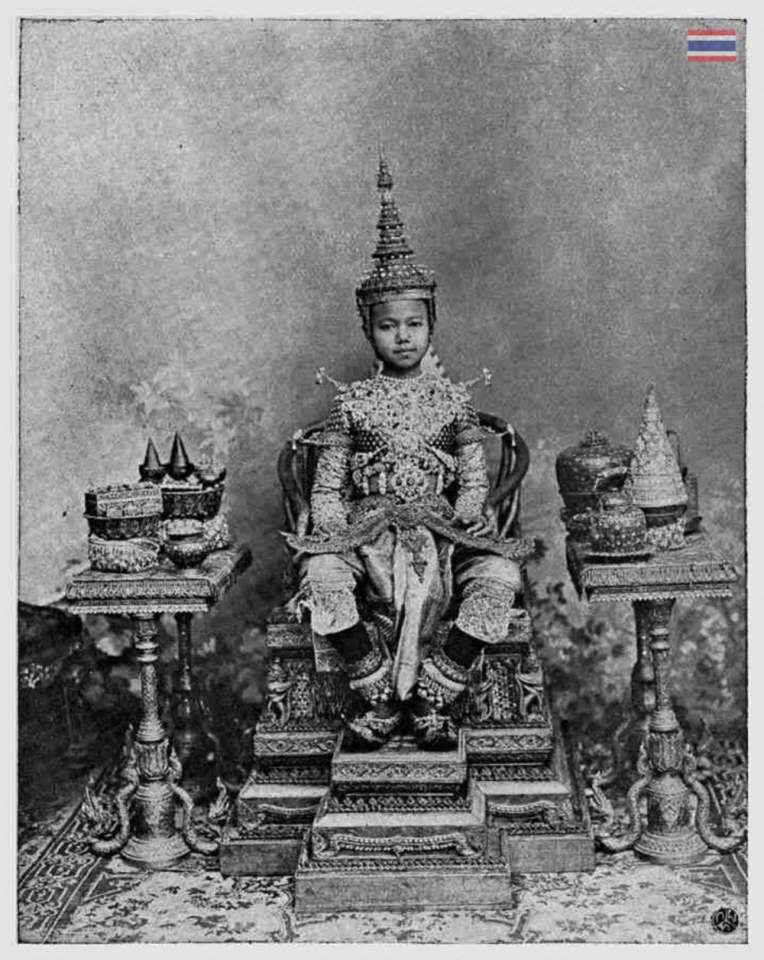
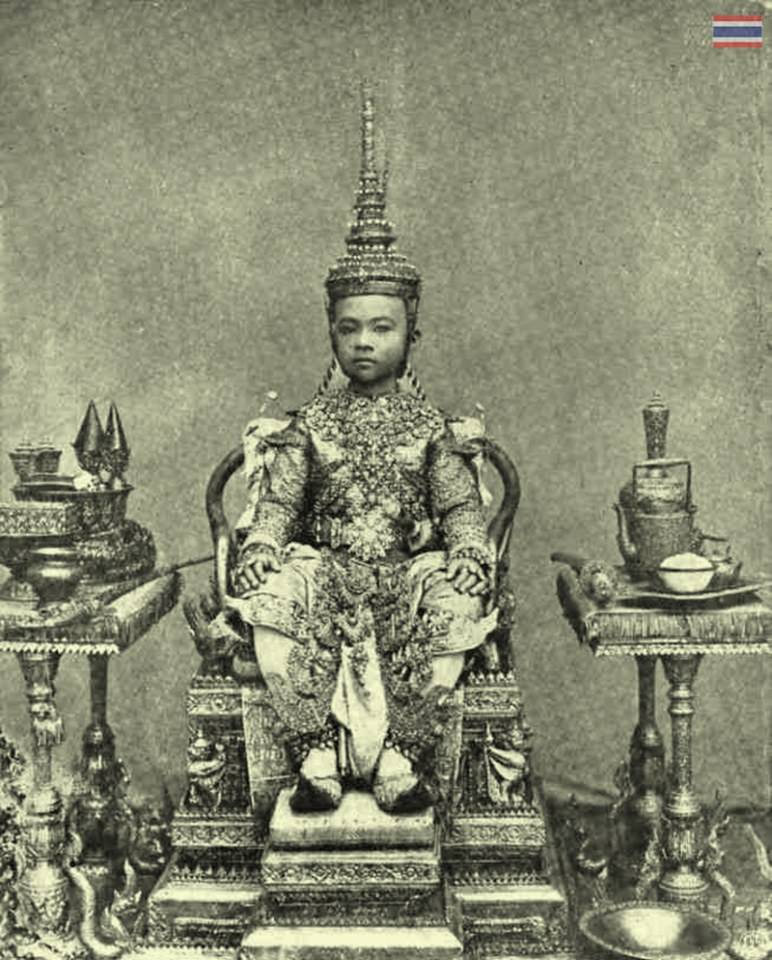
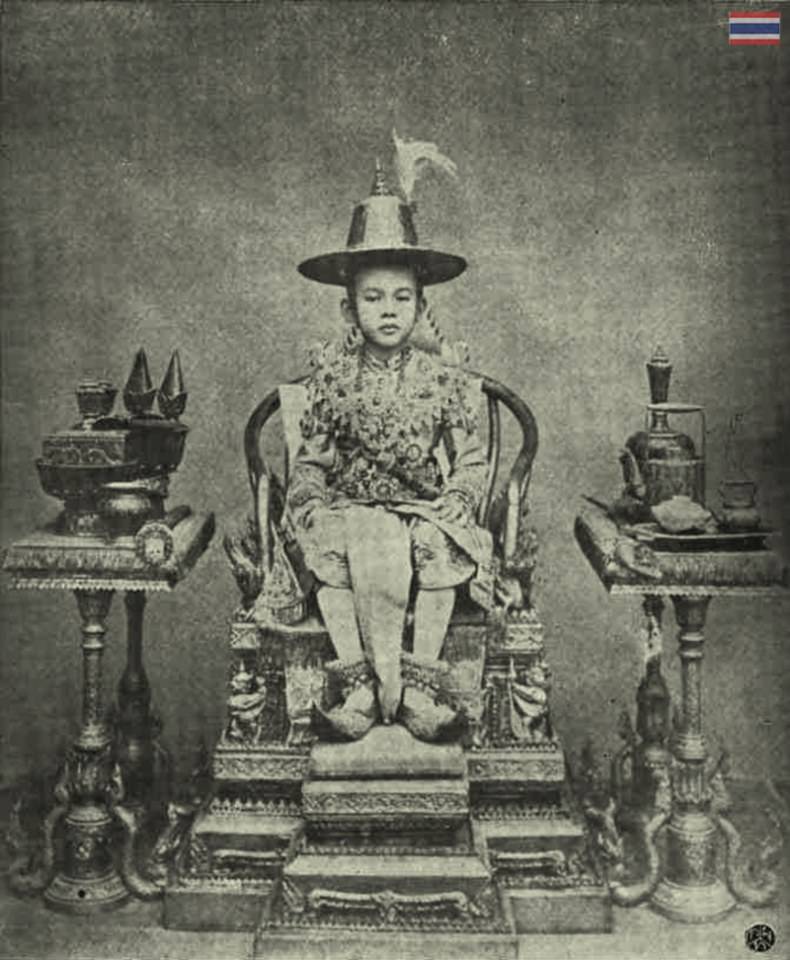
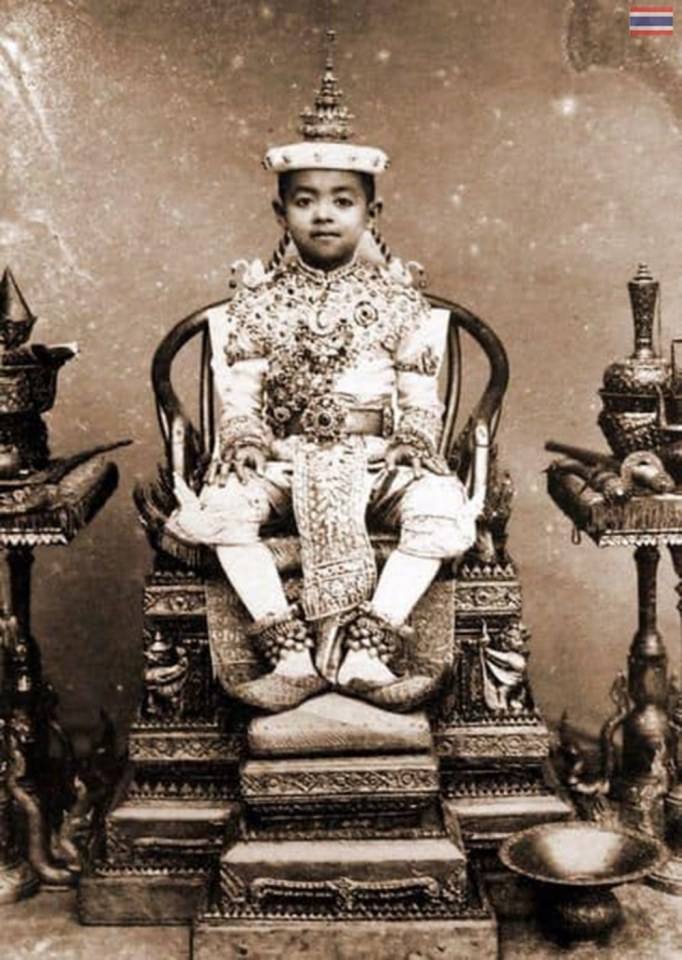
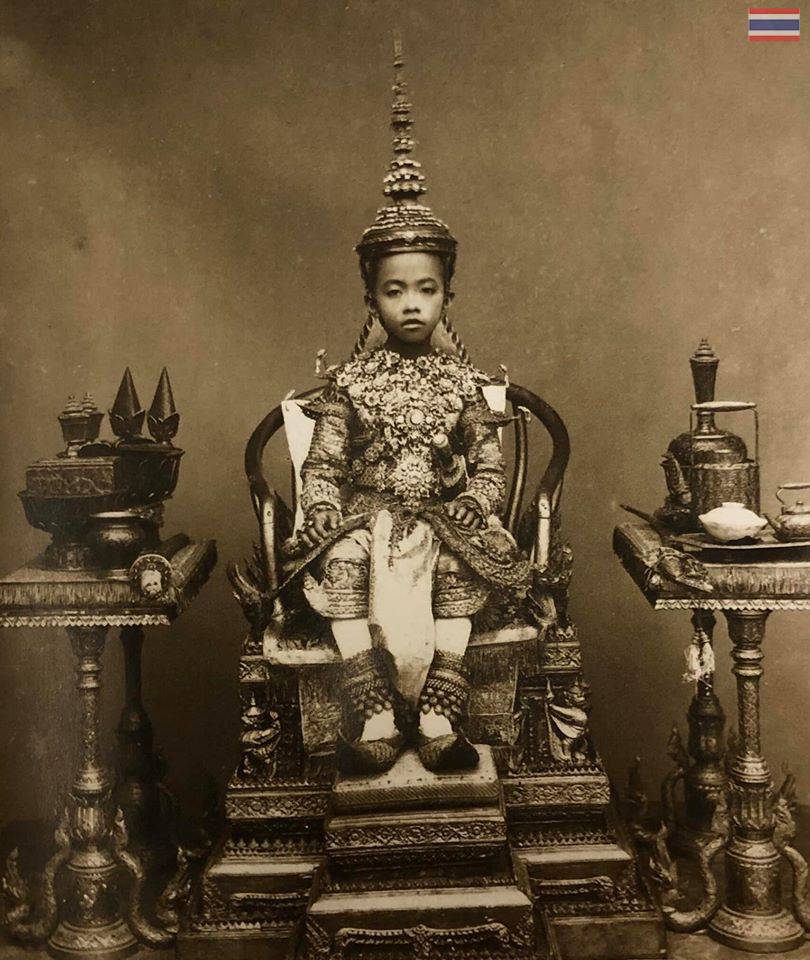
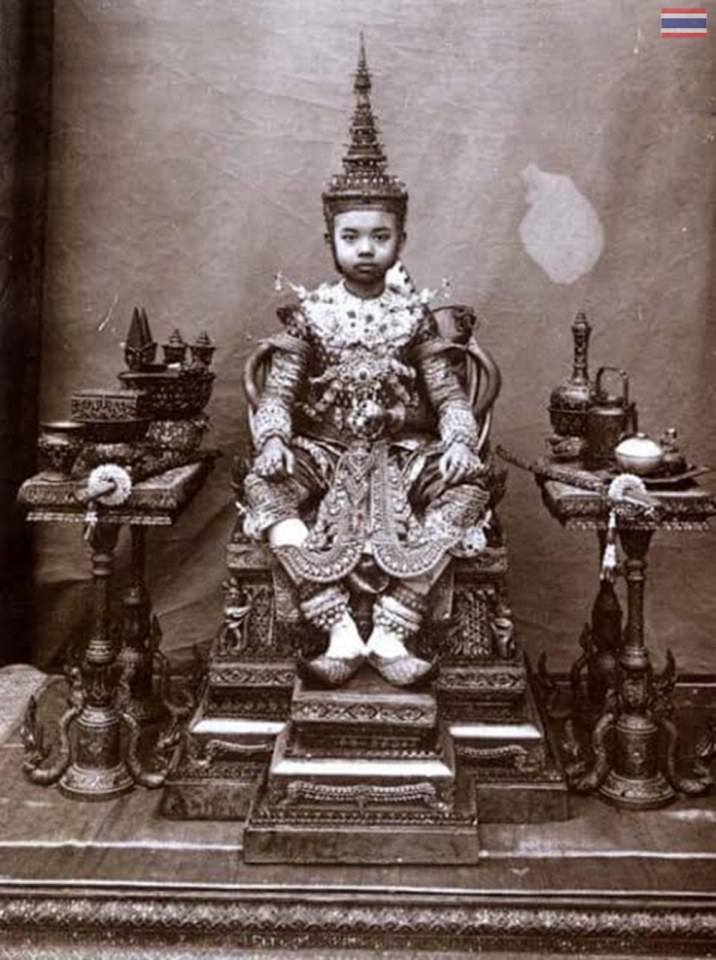
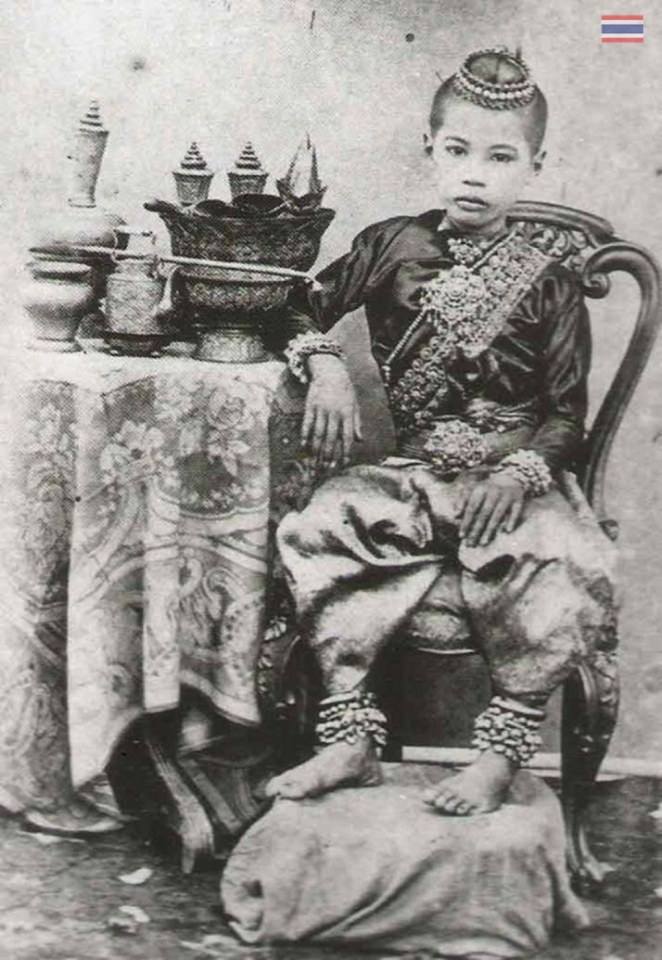
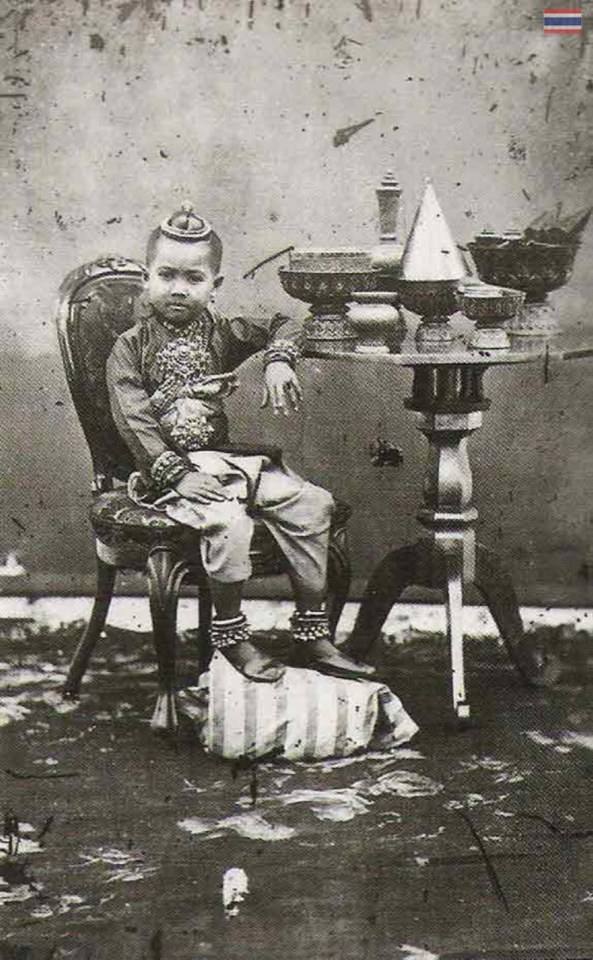
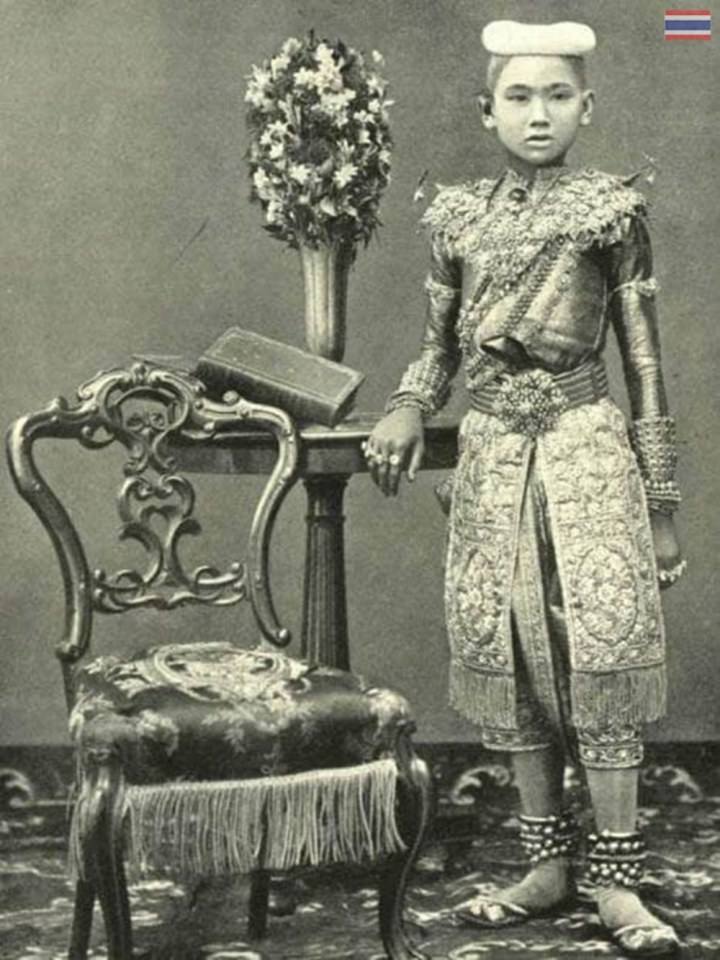
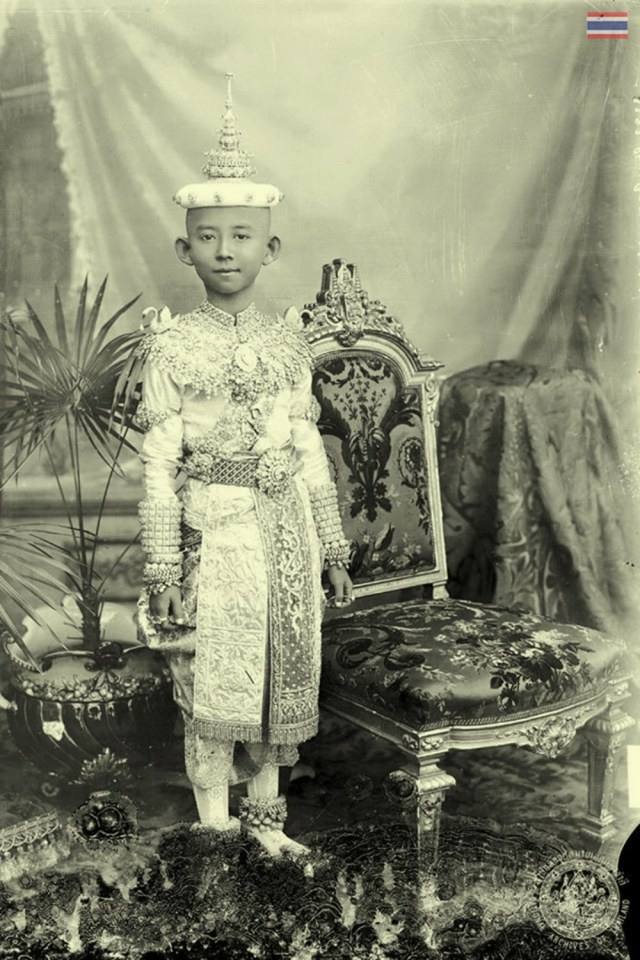
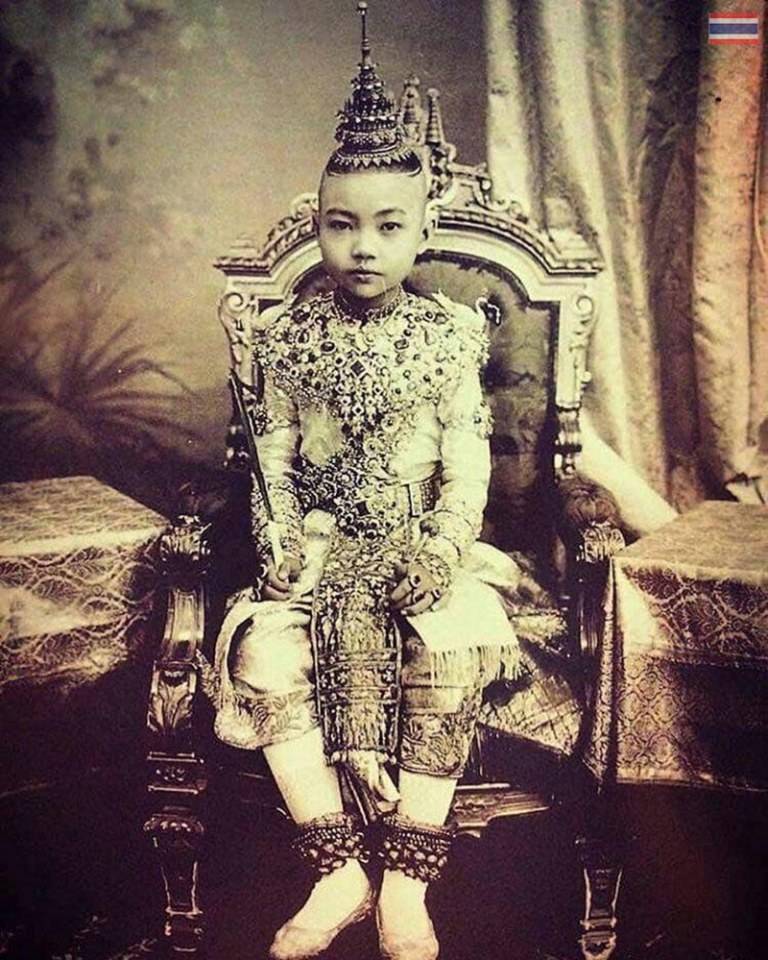
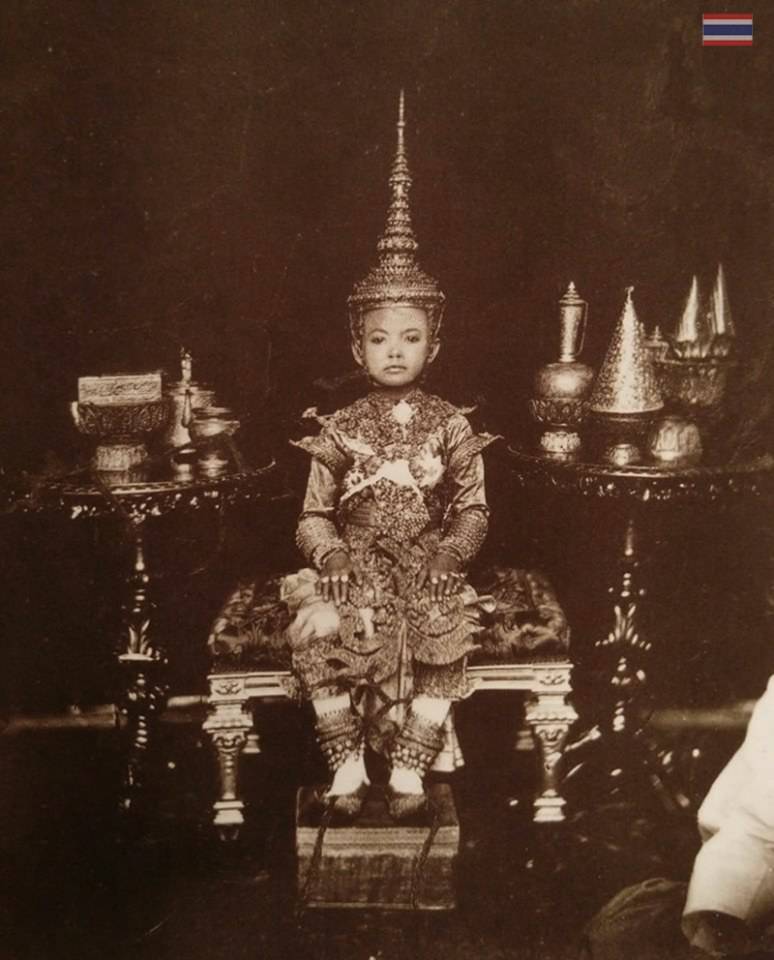
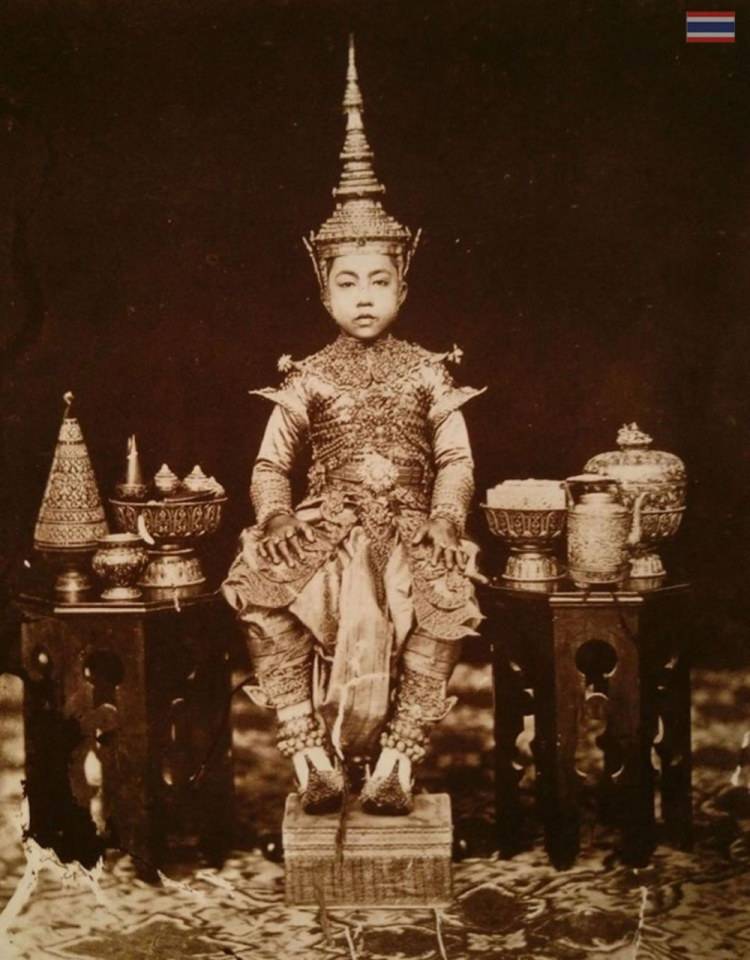
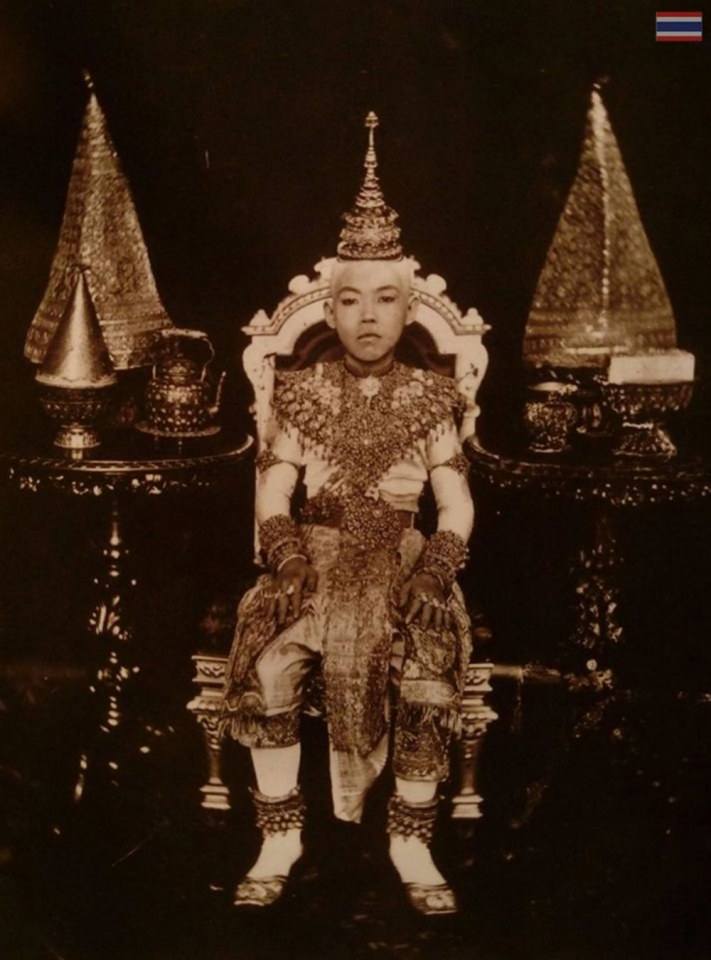
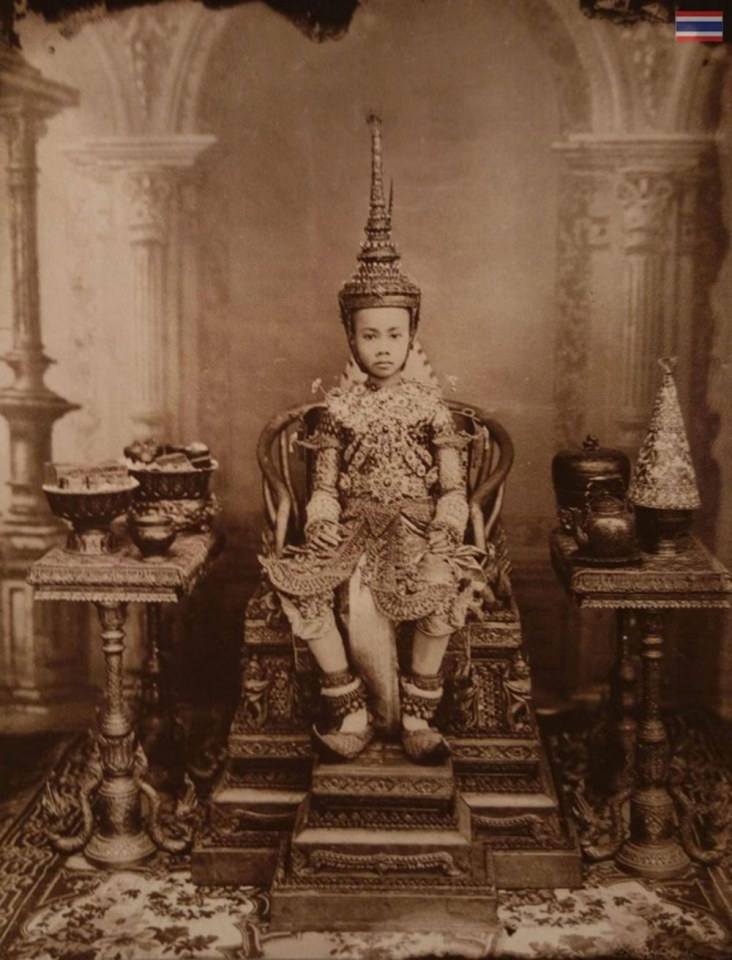
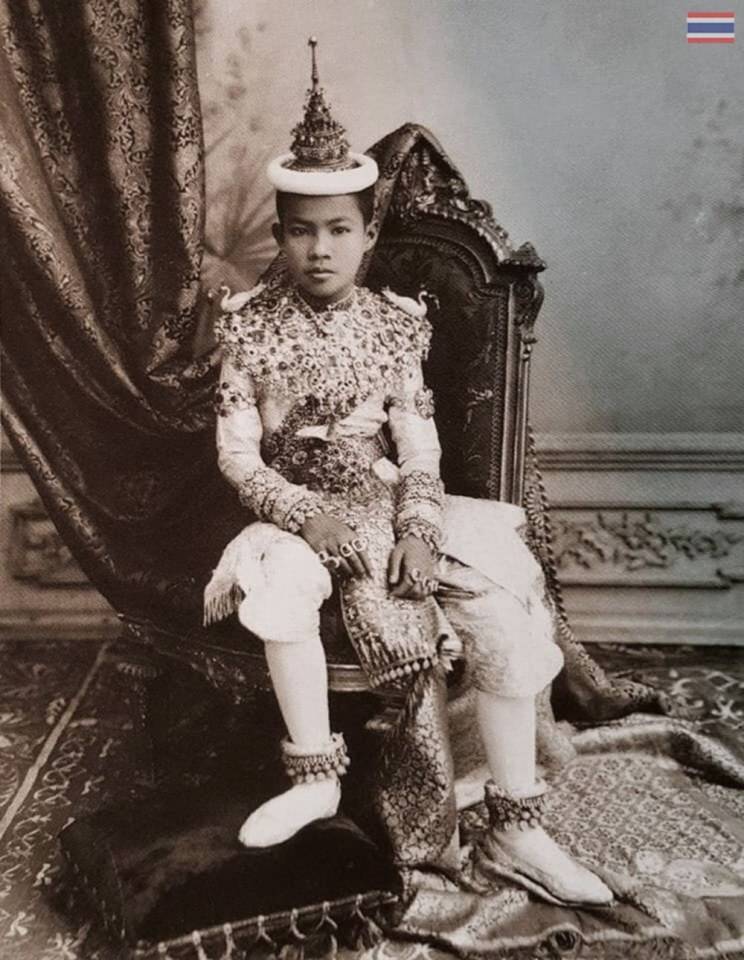
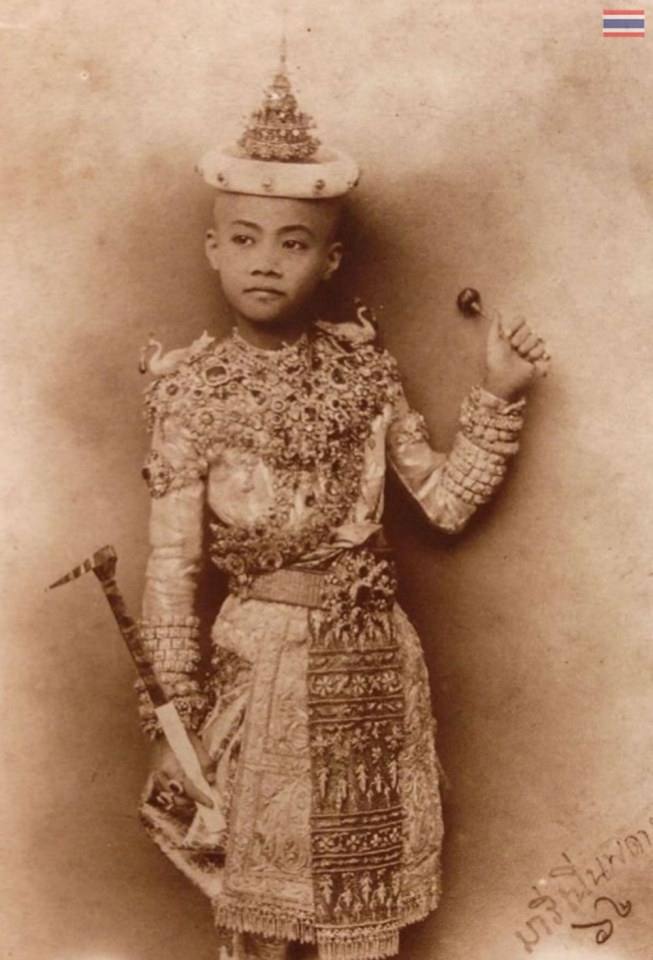
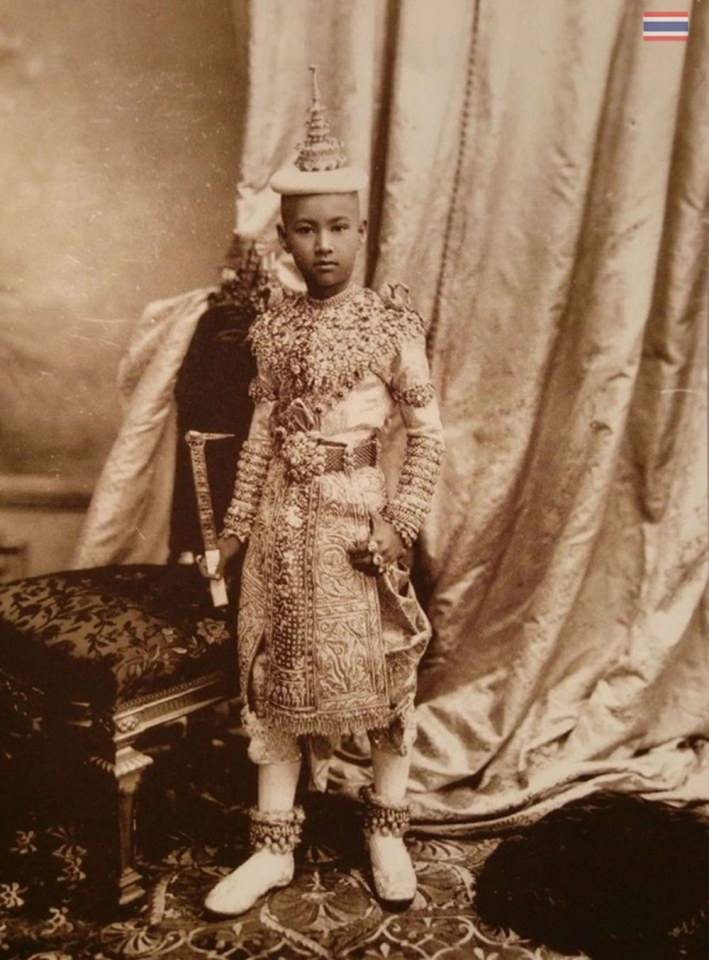
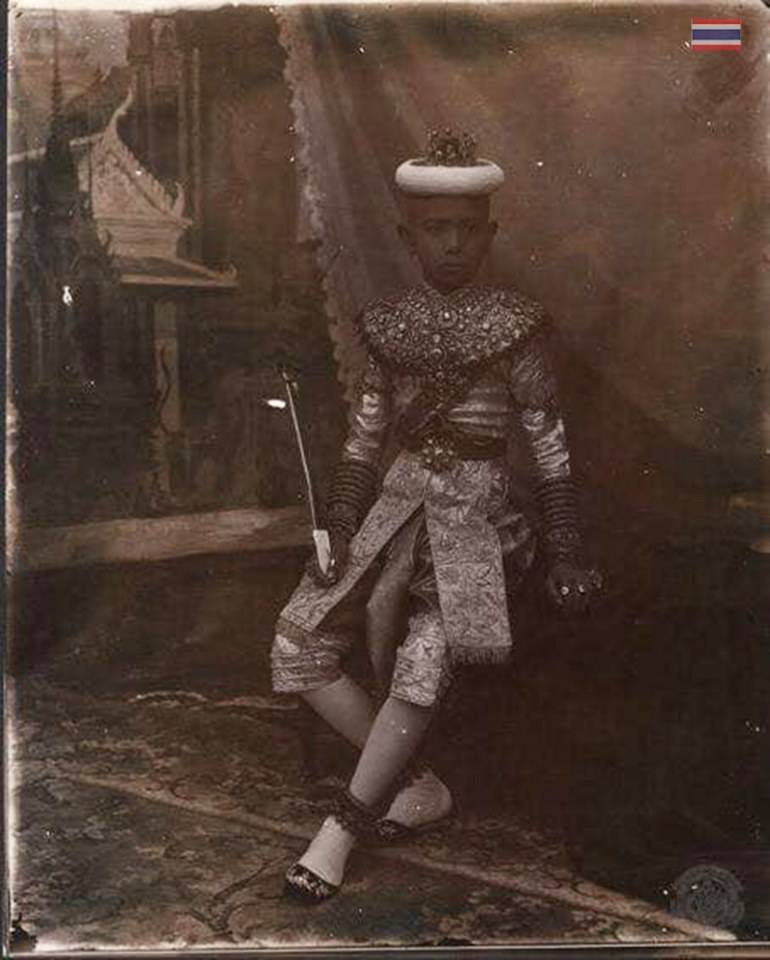
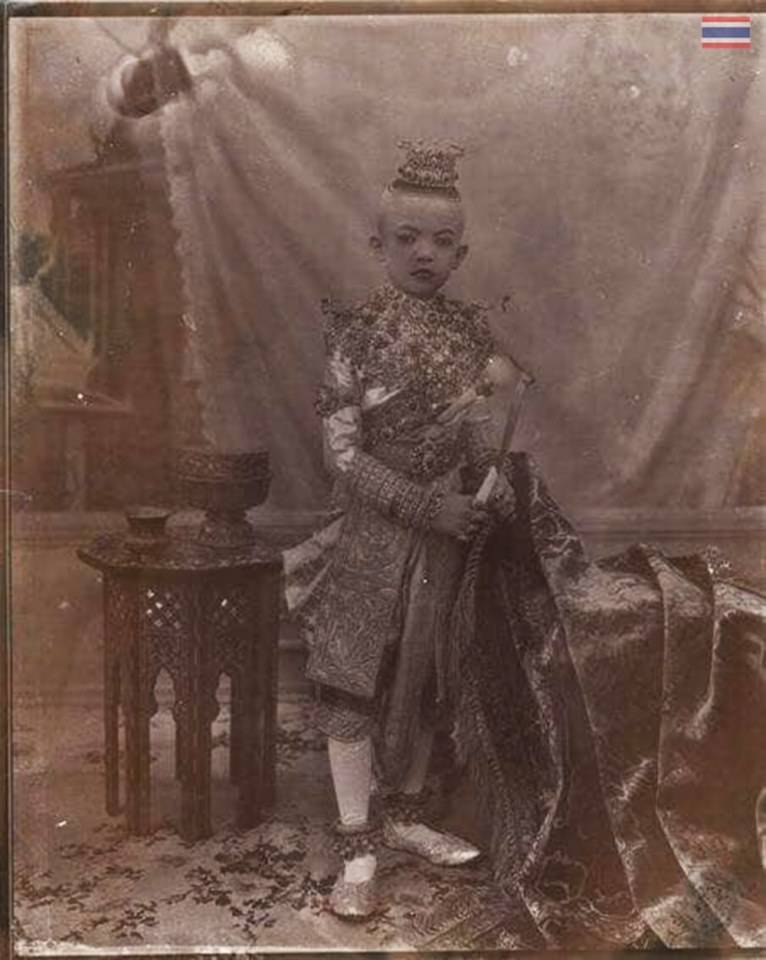
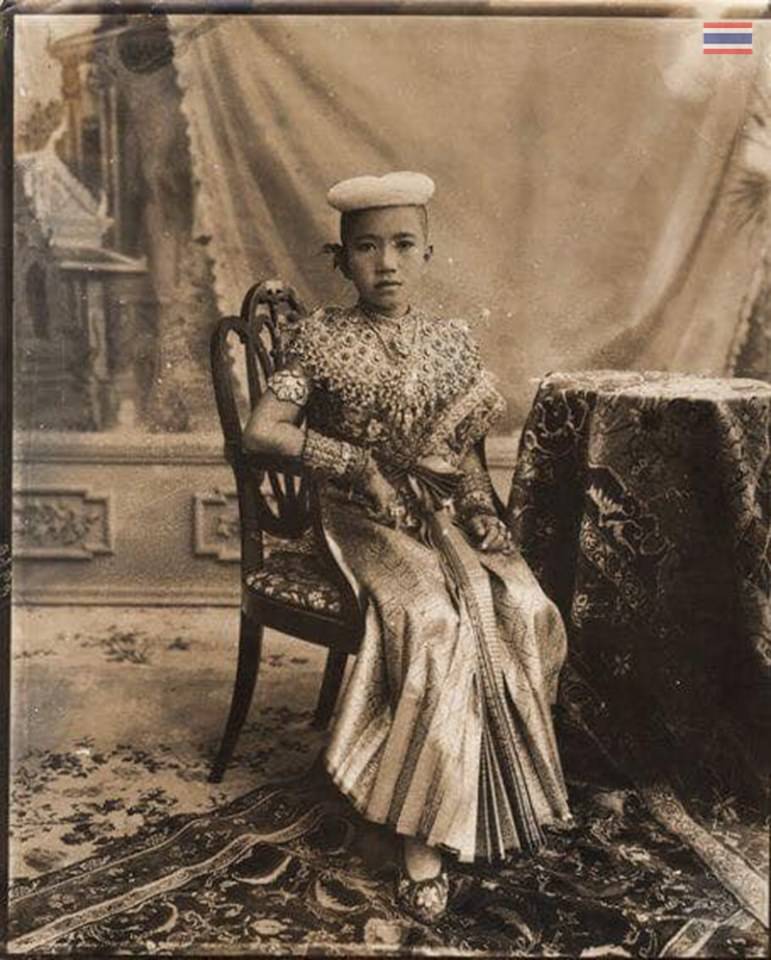
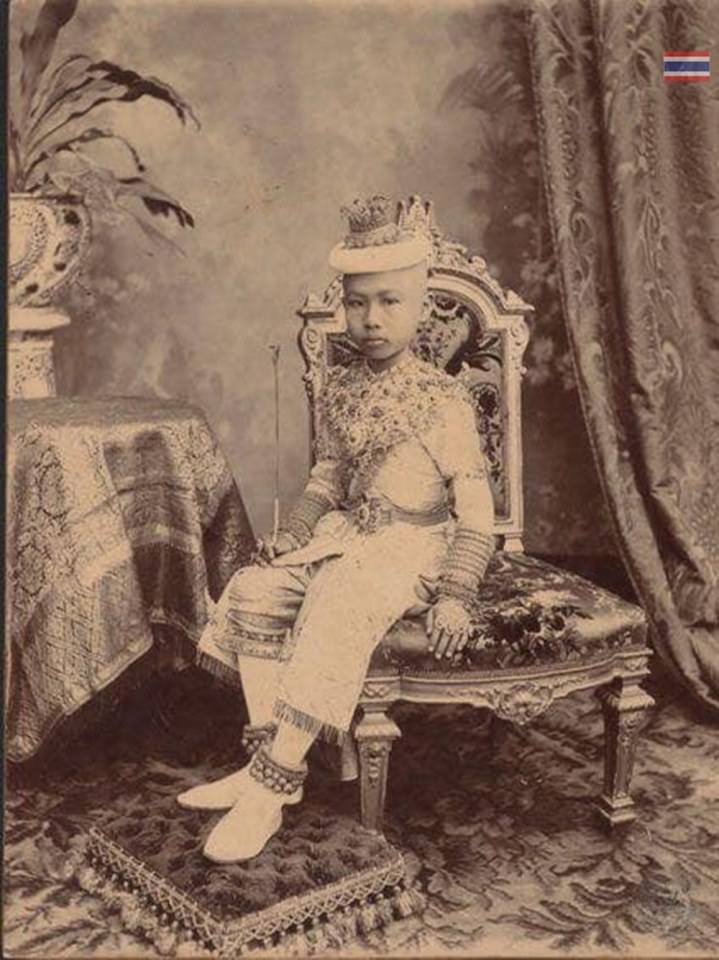
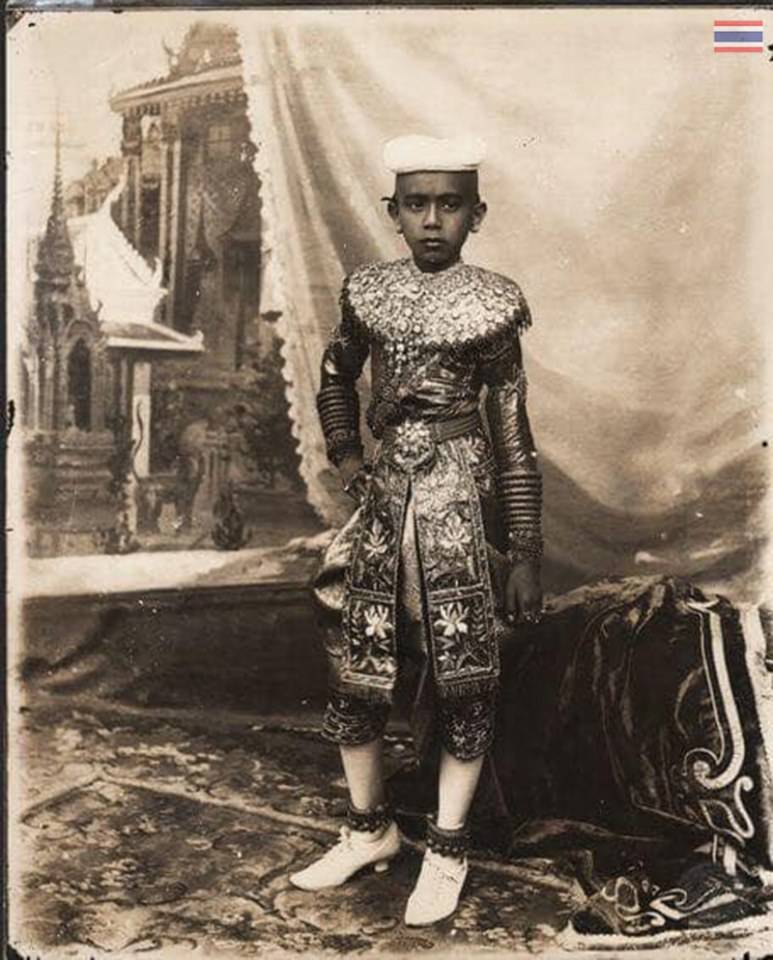
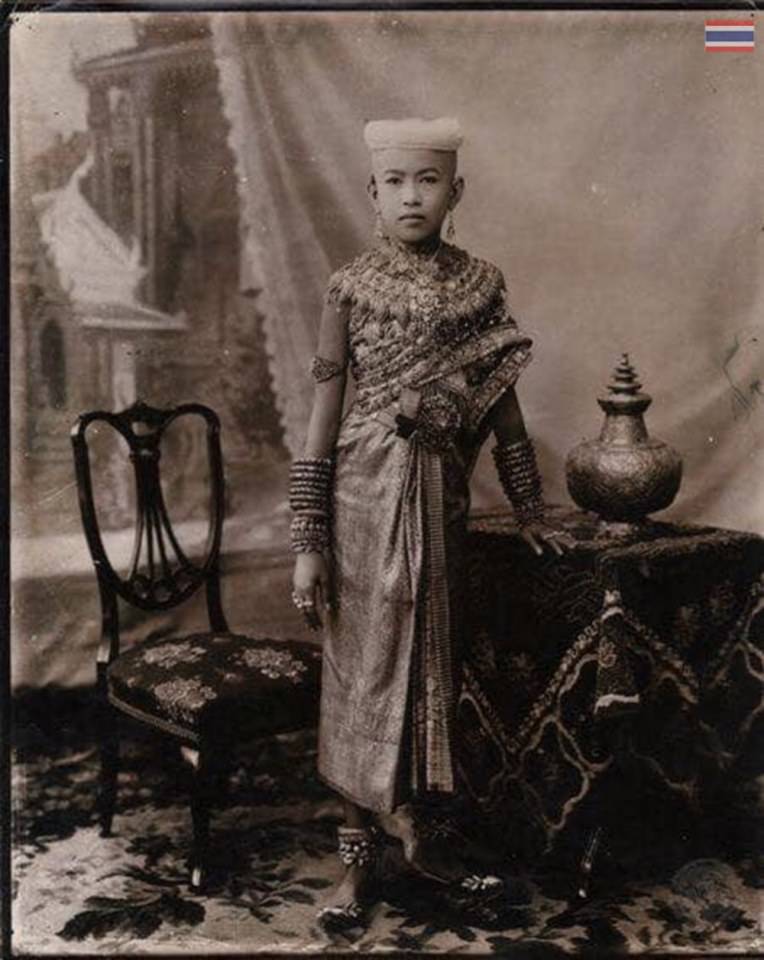
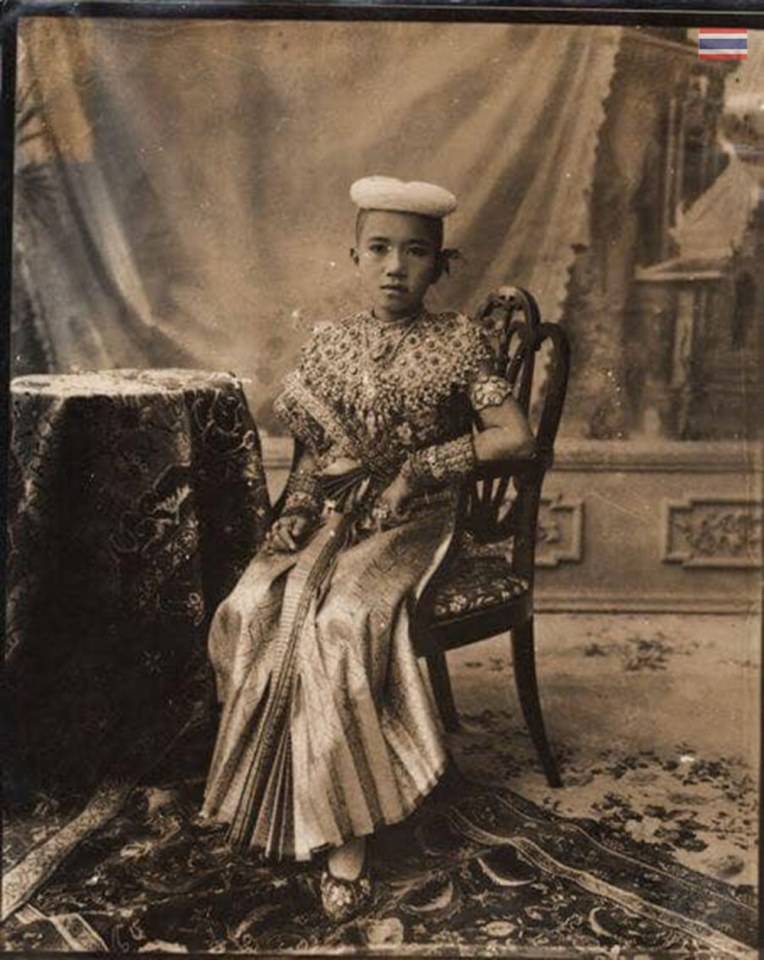
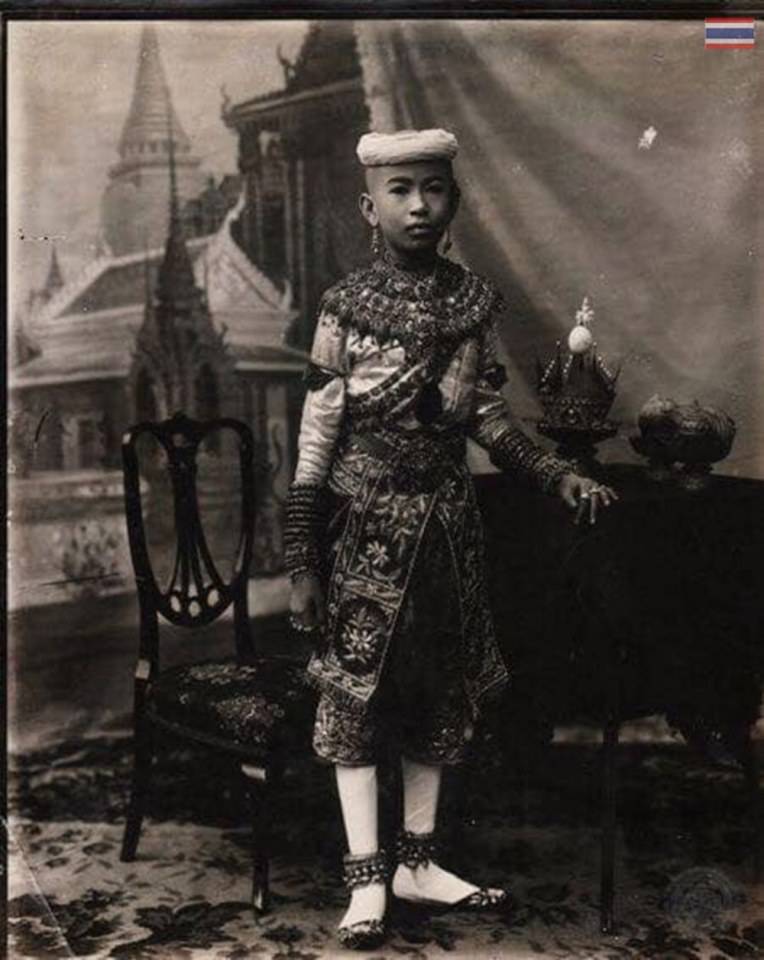
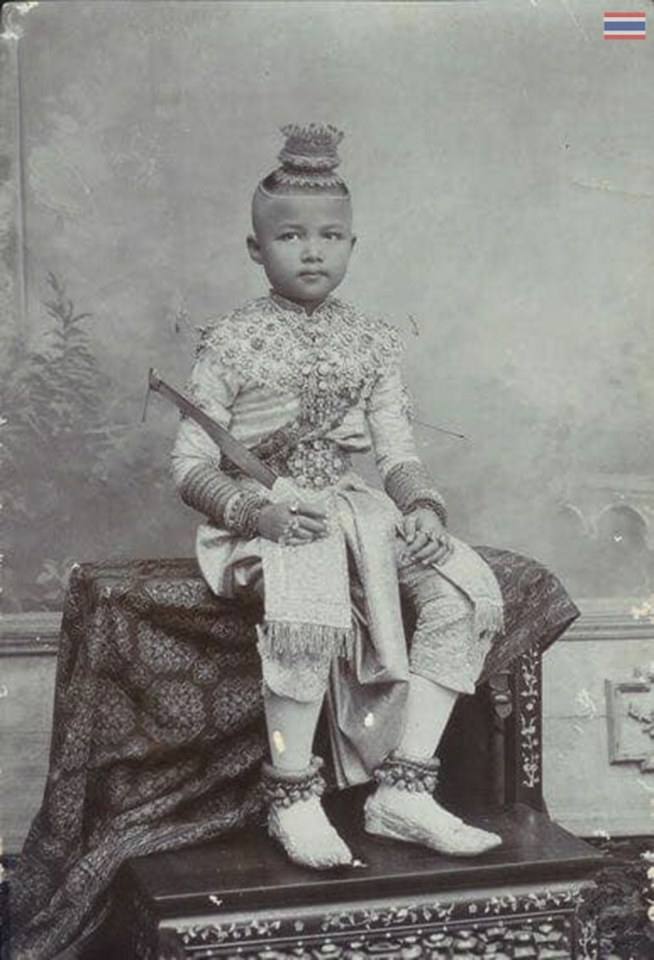
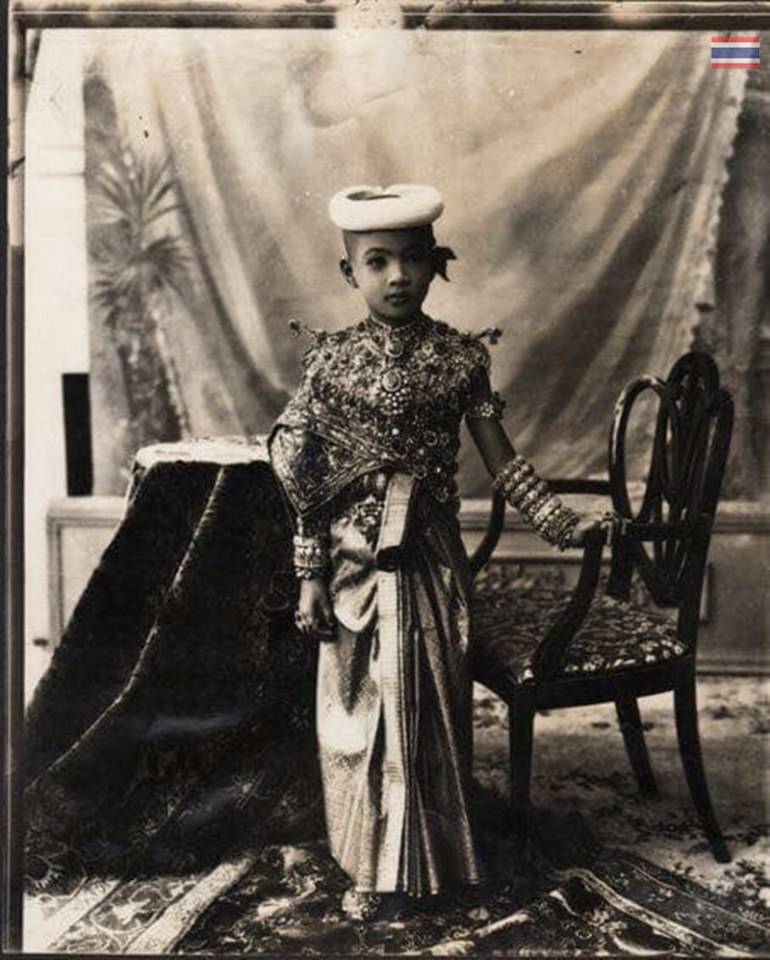
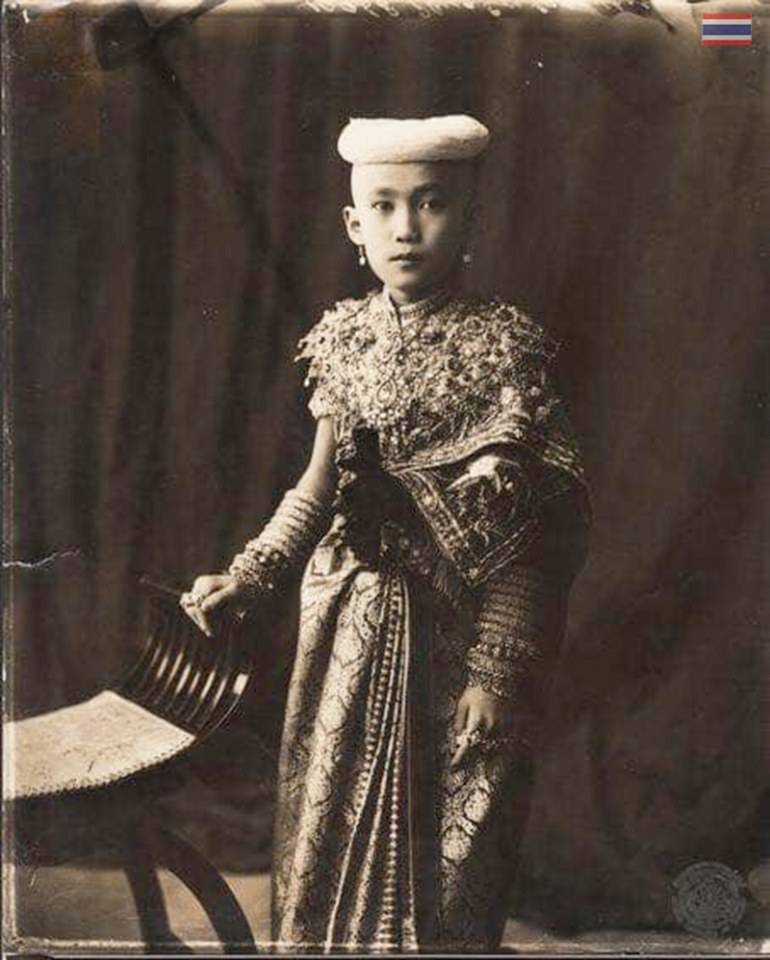
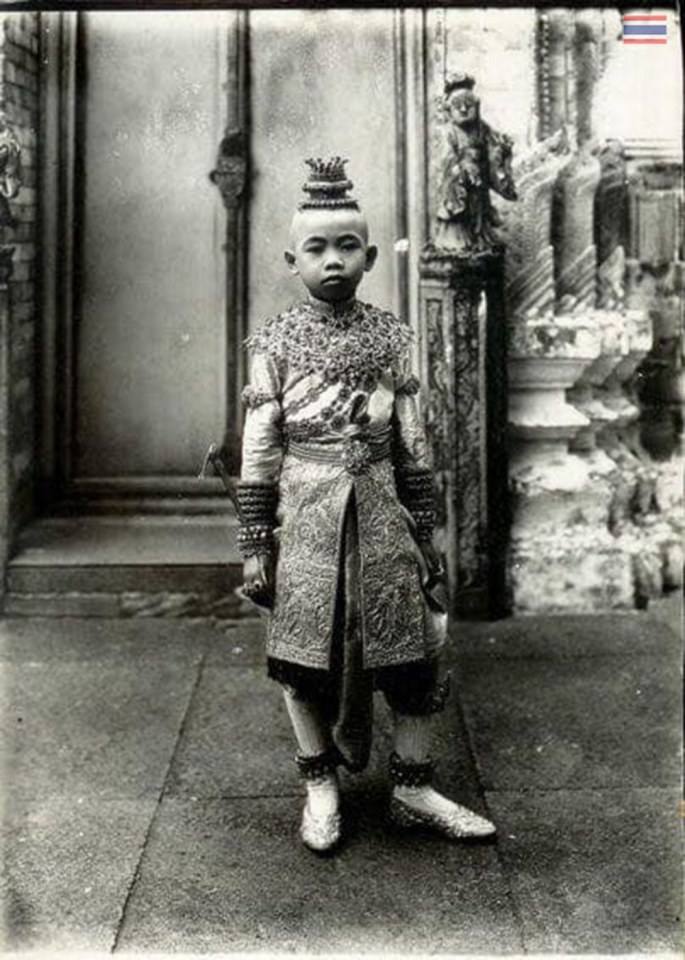
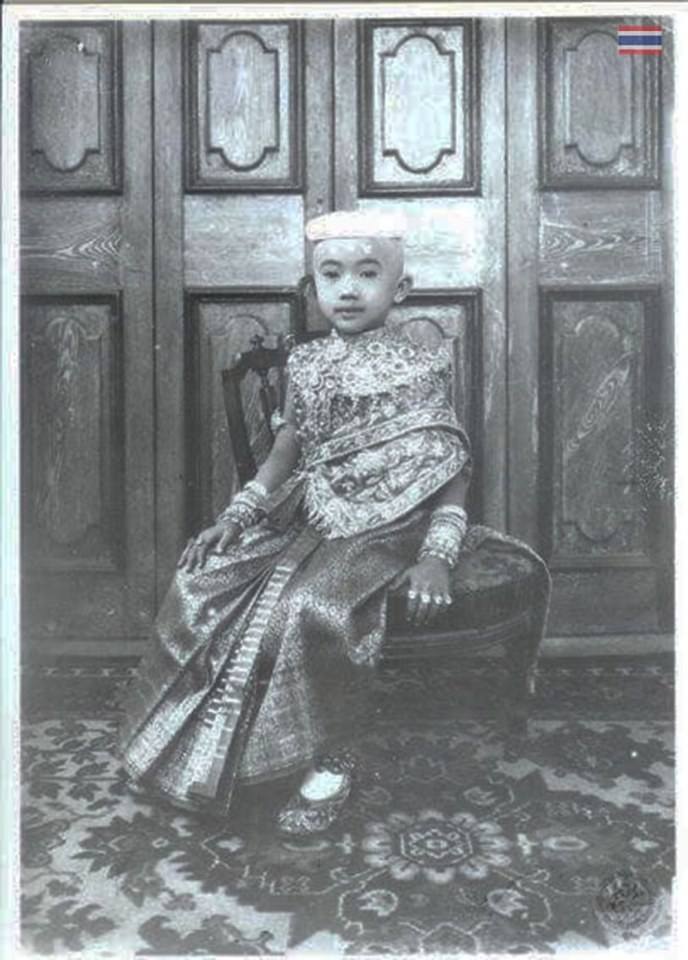
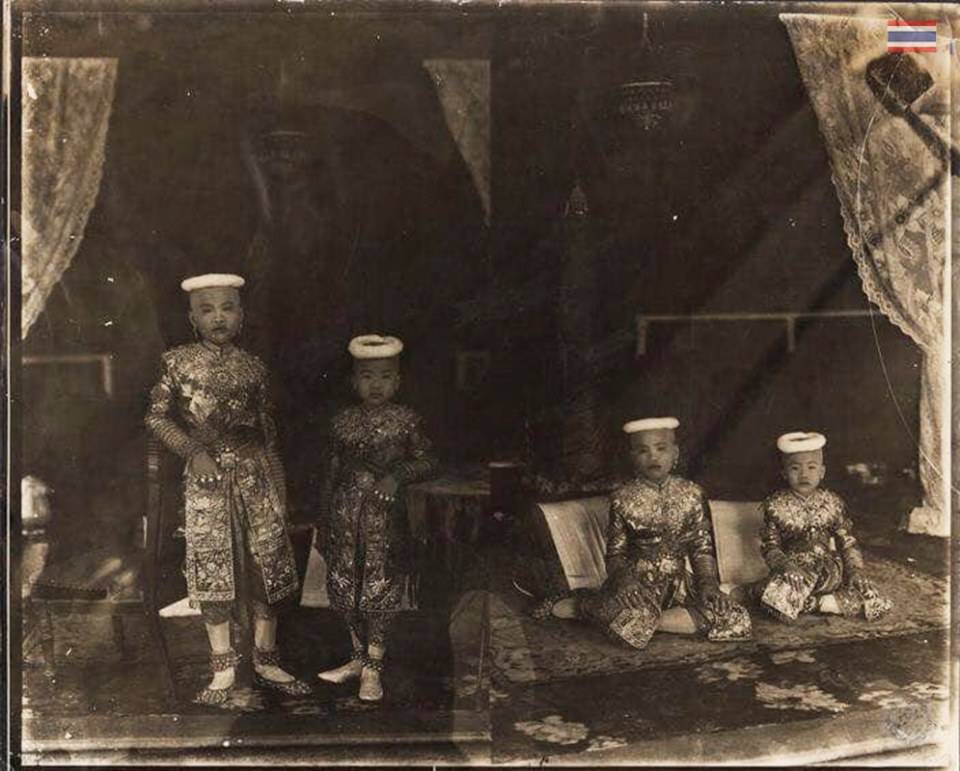
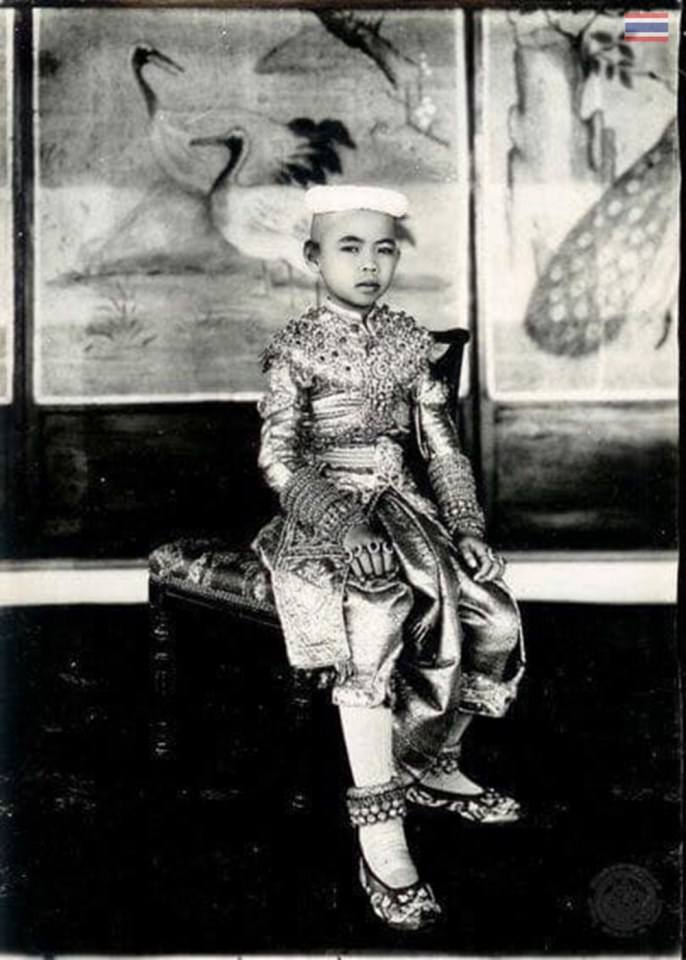
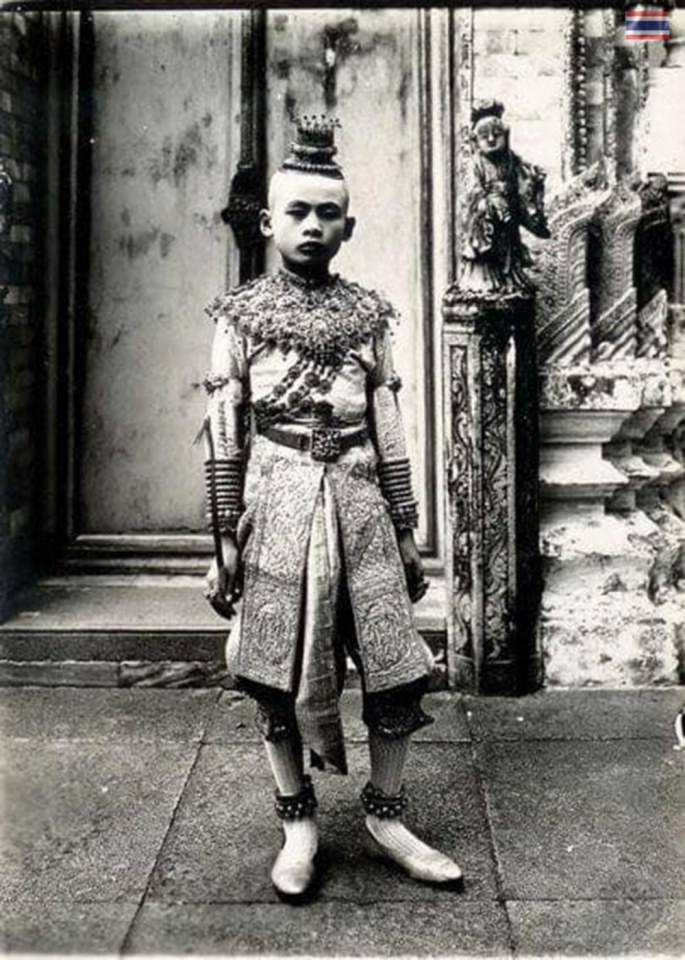
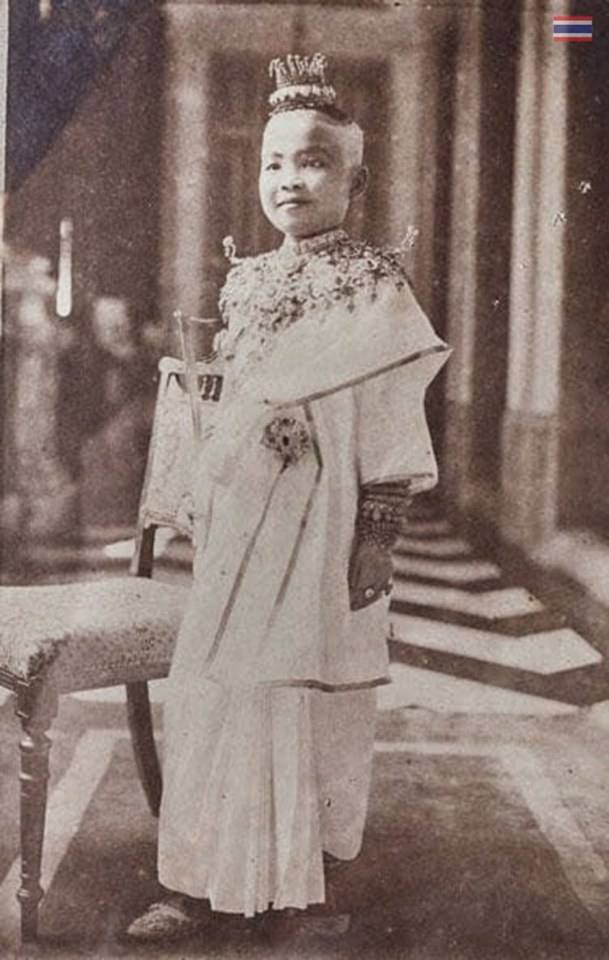
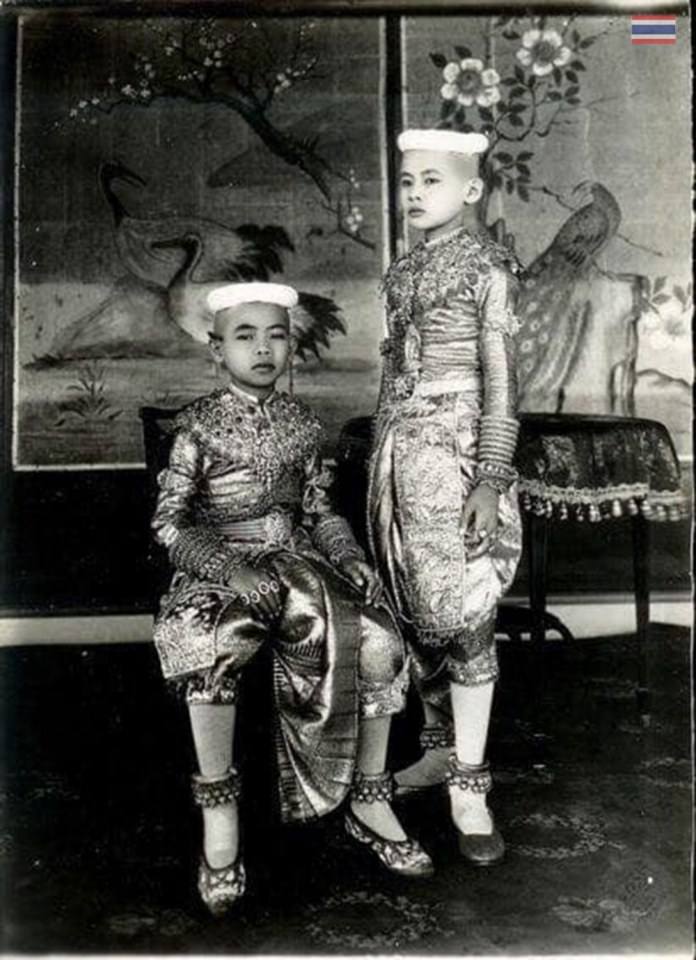
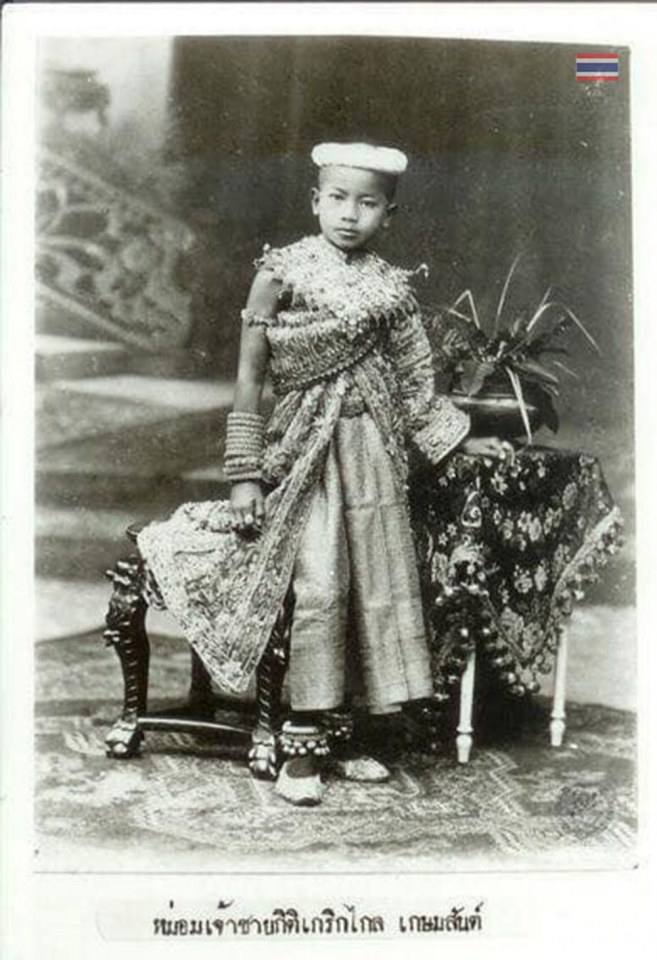
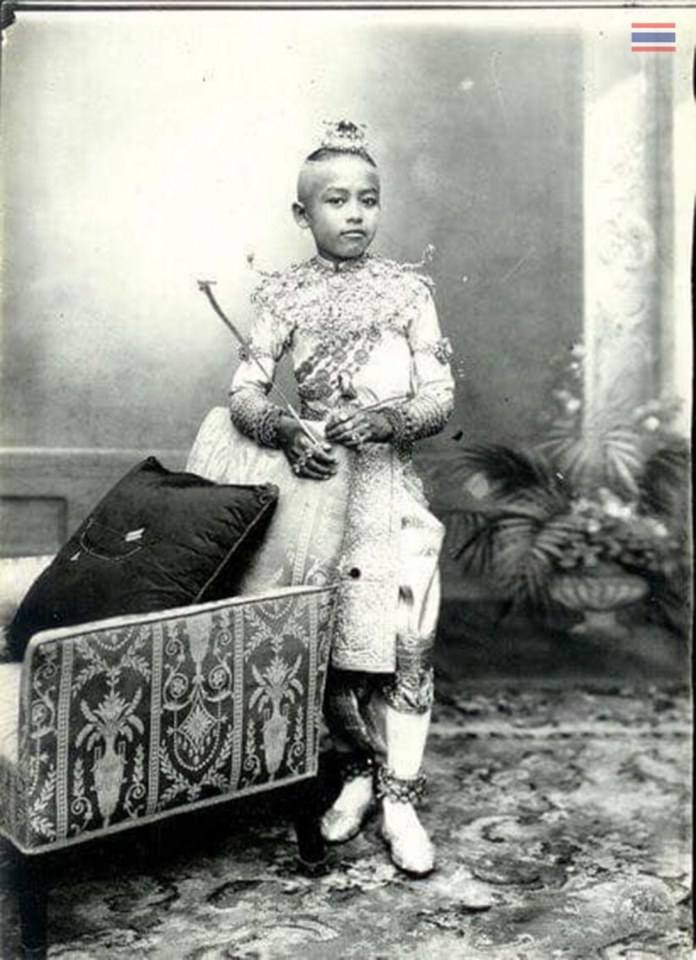
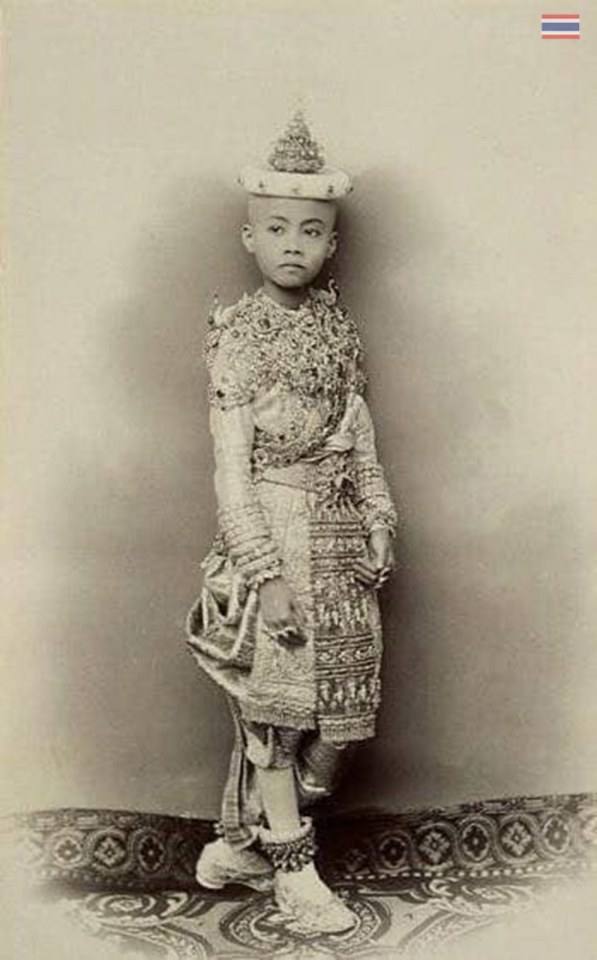
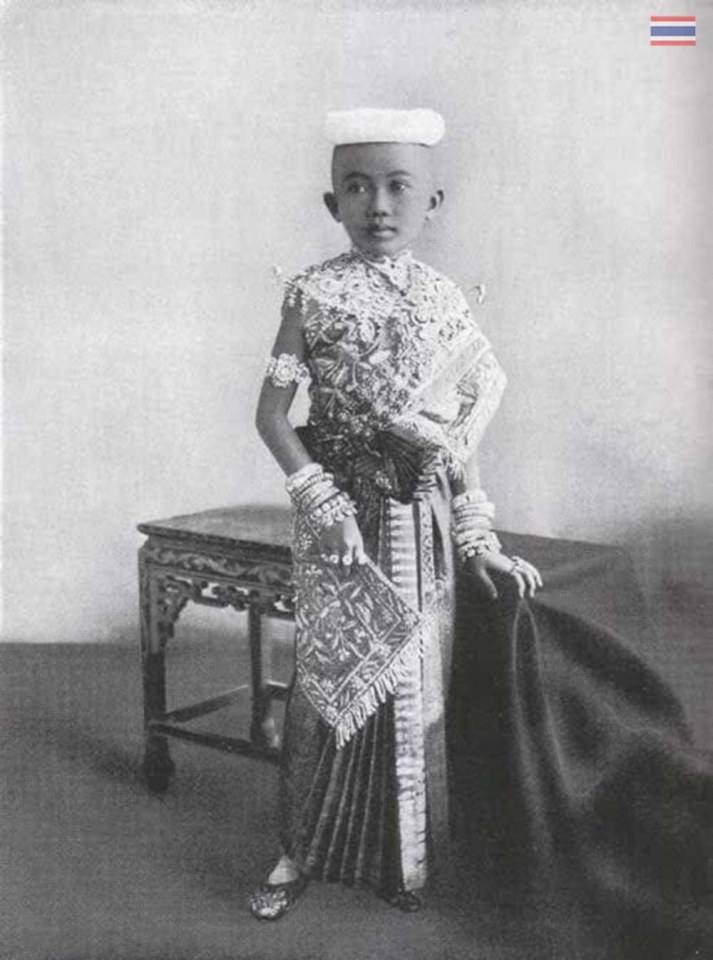
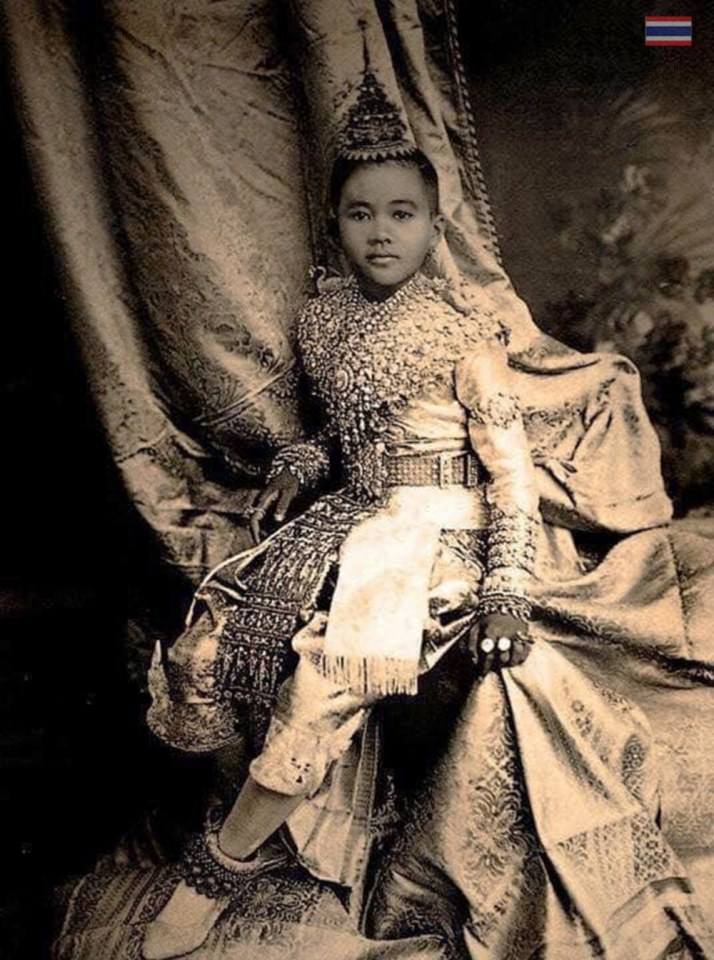
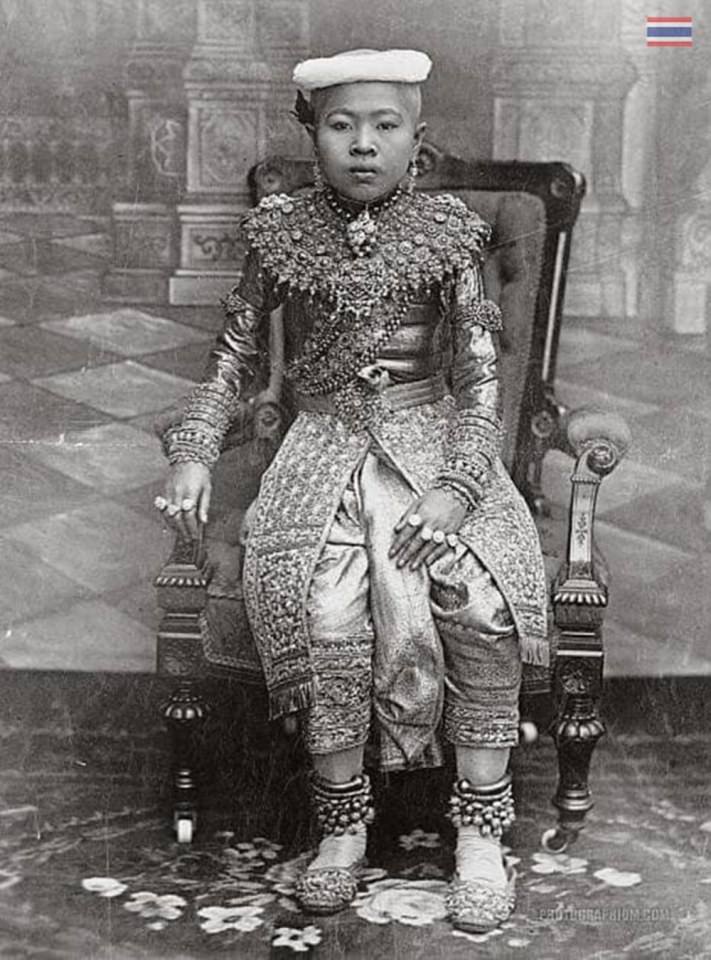
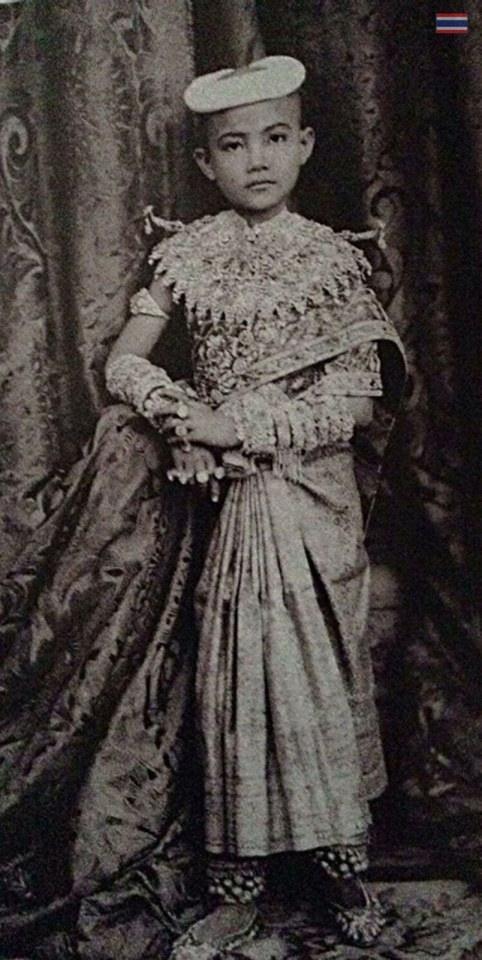
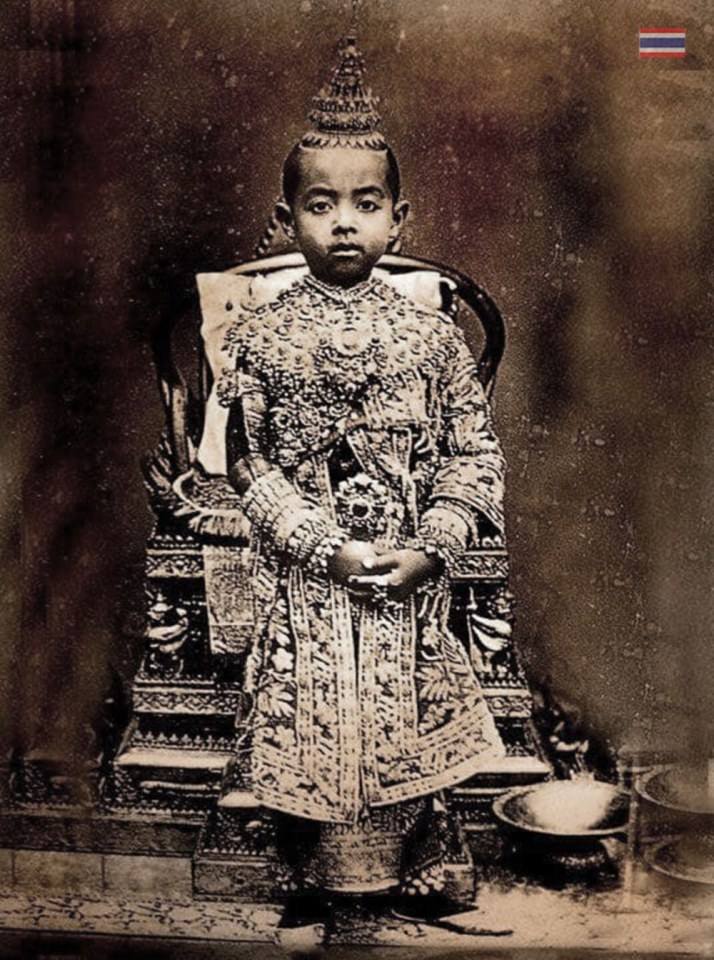
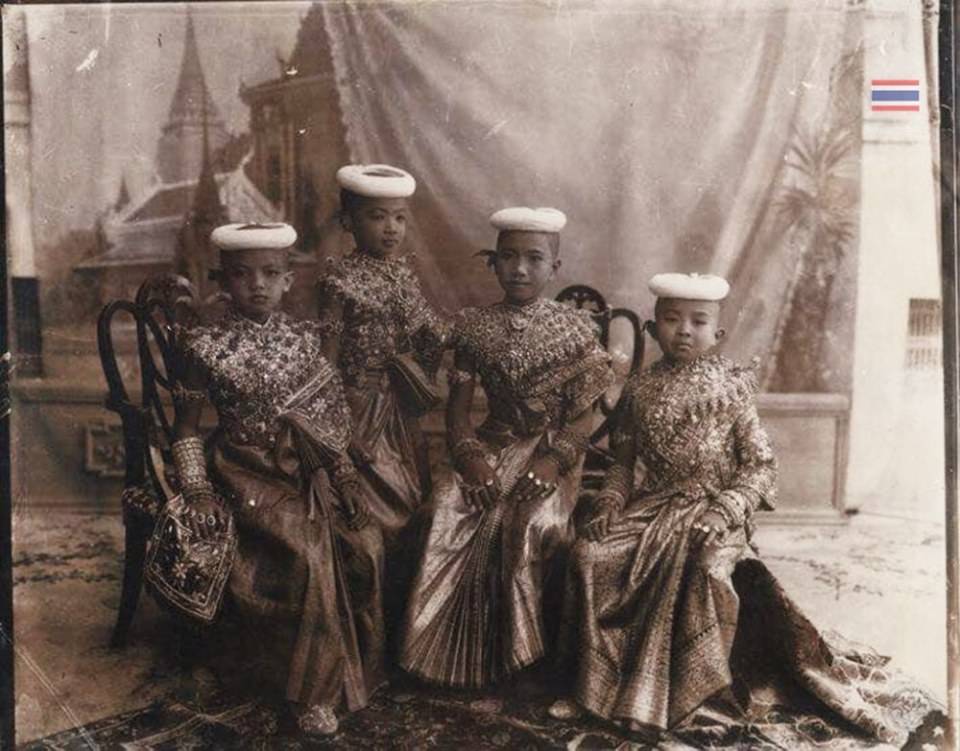
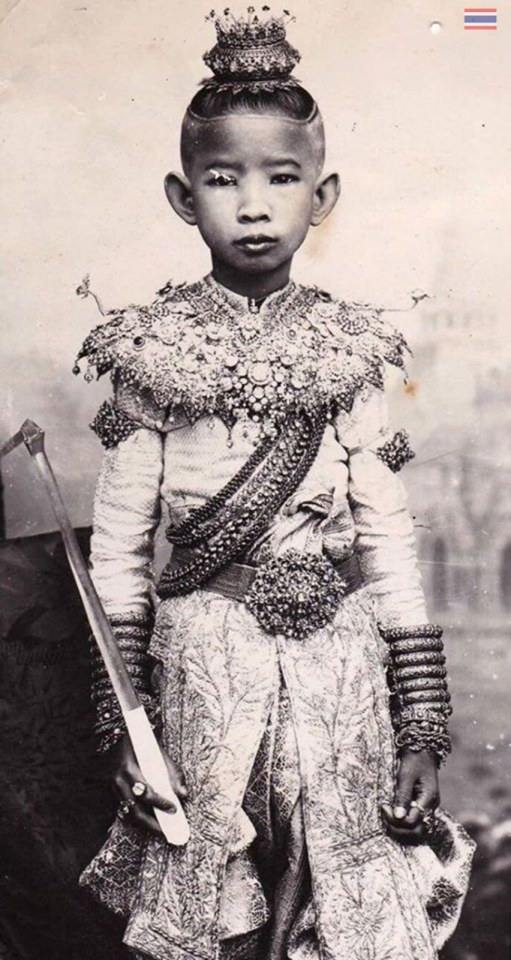
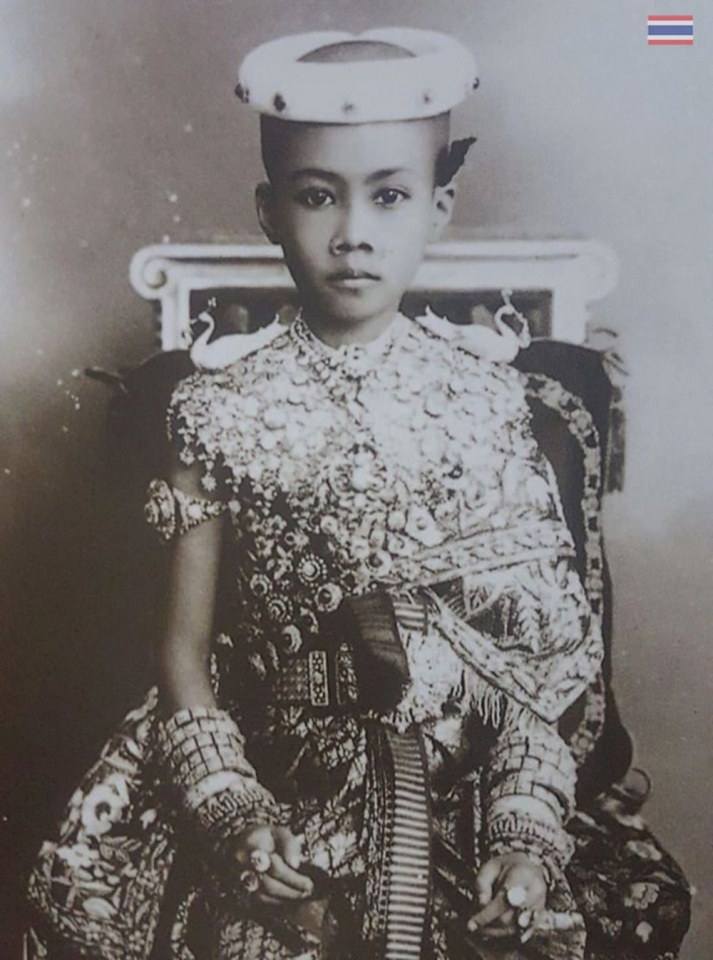
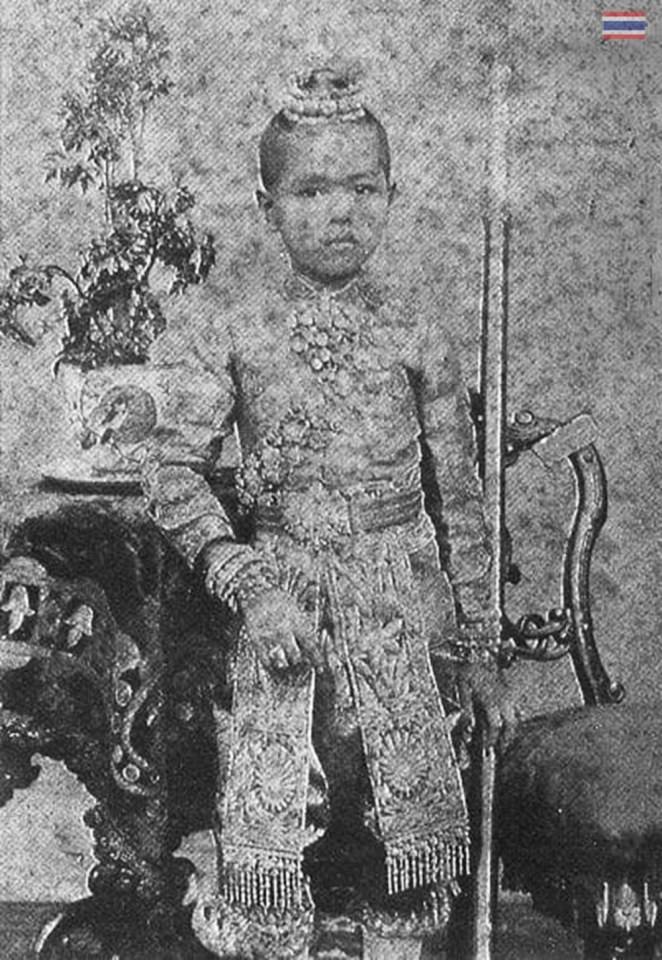
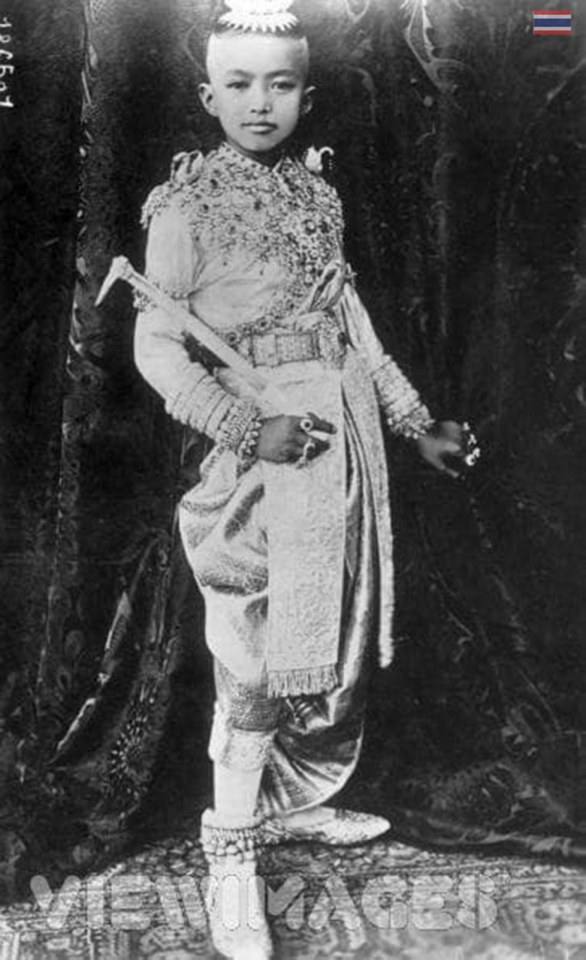
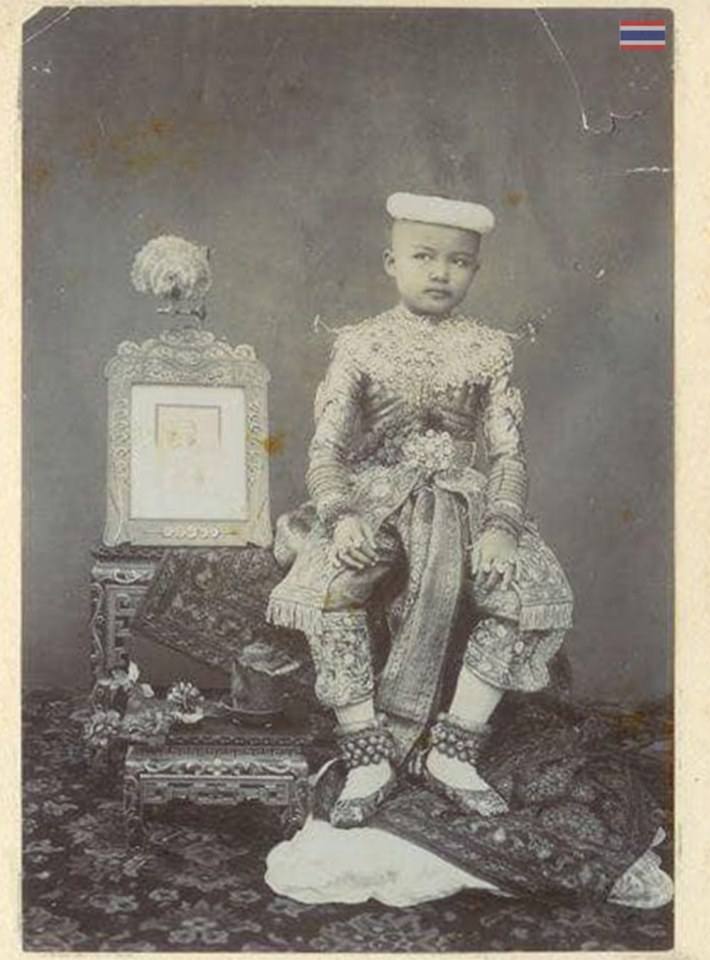
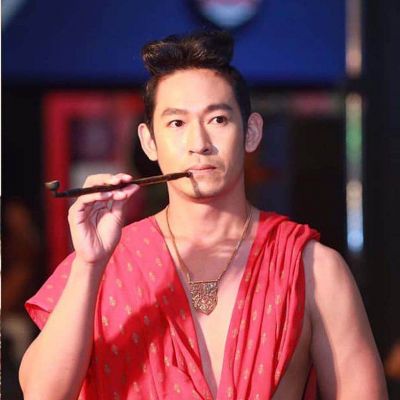 THAILAND 🇹🇭 | The Research of Ancient Outfit in Ayutthaya kingdom 👑
THAILAND 🇹🇭 | The Research of Ancient Outfit in Ayutthaya kingdom 👑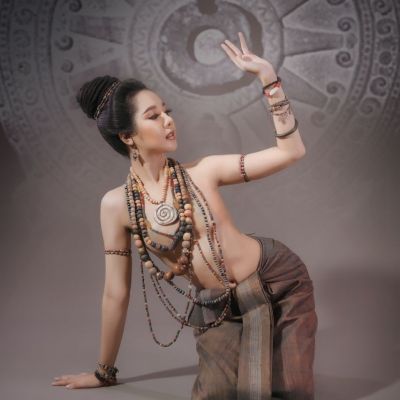 Dvaravati Era: วัฒนธรรมสมัยทวารวดี | THAILAND 🇹🇭
Dvaravati Era: วัฒนธรรมสมัยทวารวดี | THAILAND 🇹🇭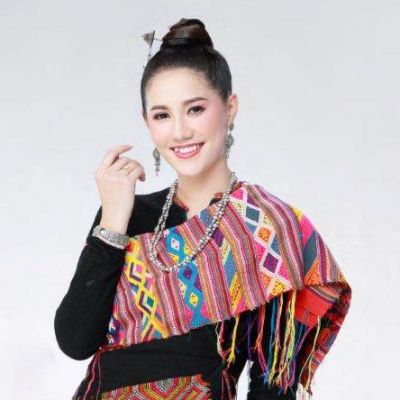 Laos 🇱🇦 | ethnic and tribe outfit, ການແຕ່ງກາຍຂອງຊົນເຜົ່າໃນລາວ by MISS LAOS ນາງສາວລາວ2020
Laos 🇱🇦 | ethnic and tribe outfit, ການແຕ່ງກາຍຂອງຊົນເຜົ່າໃນລາວ by MISS LAOS ນາງສາວລາວ2020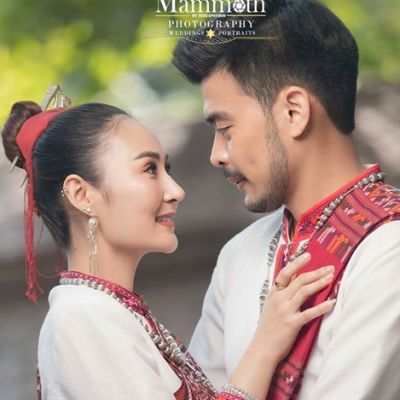 ชุดแต่งงานอีสาน, Thailand
ชุดแต่งงานอีสาน, Thailand